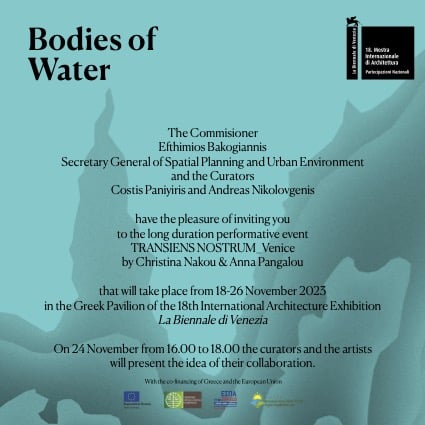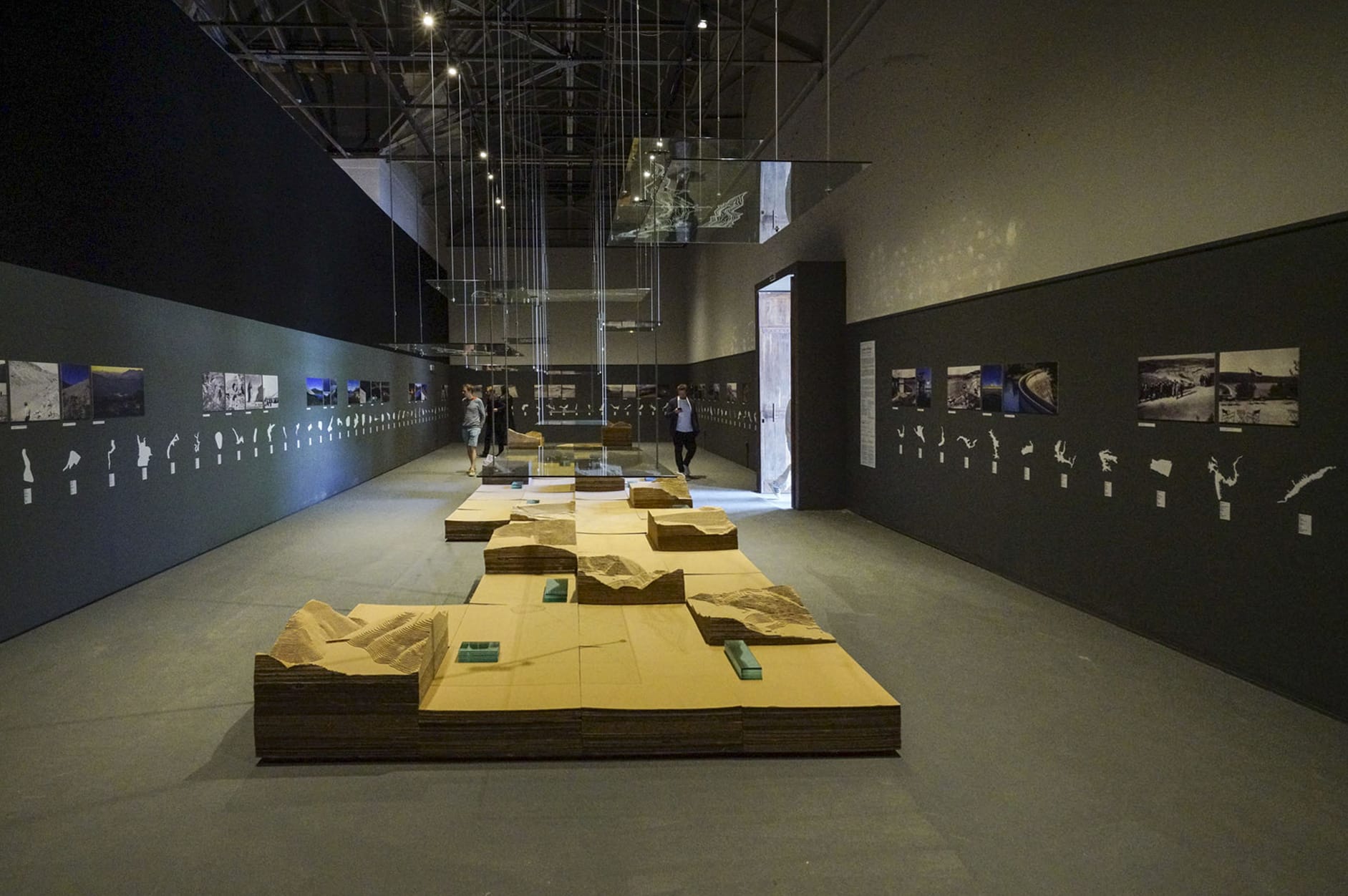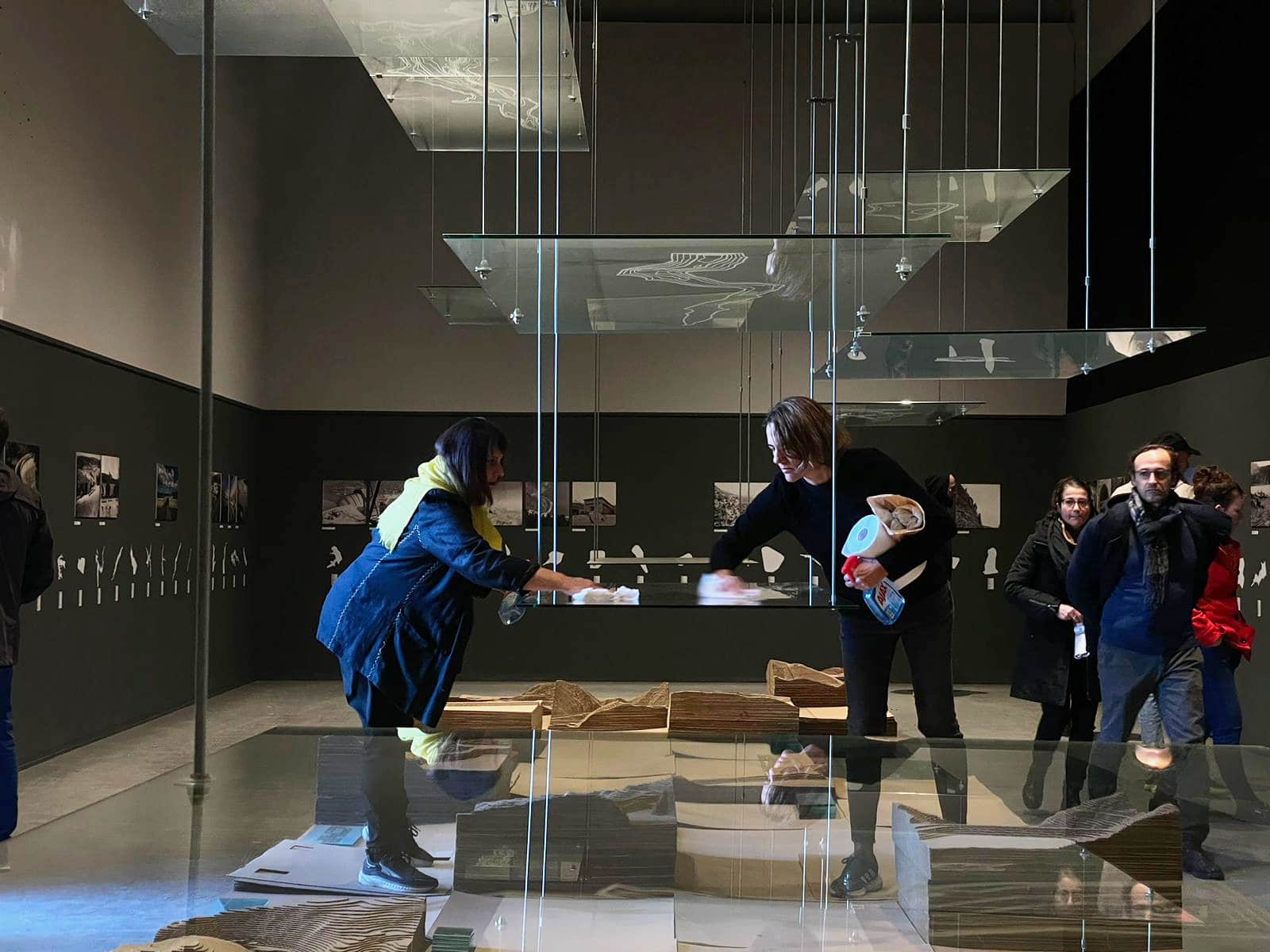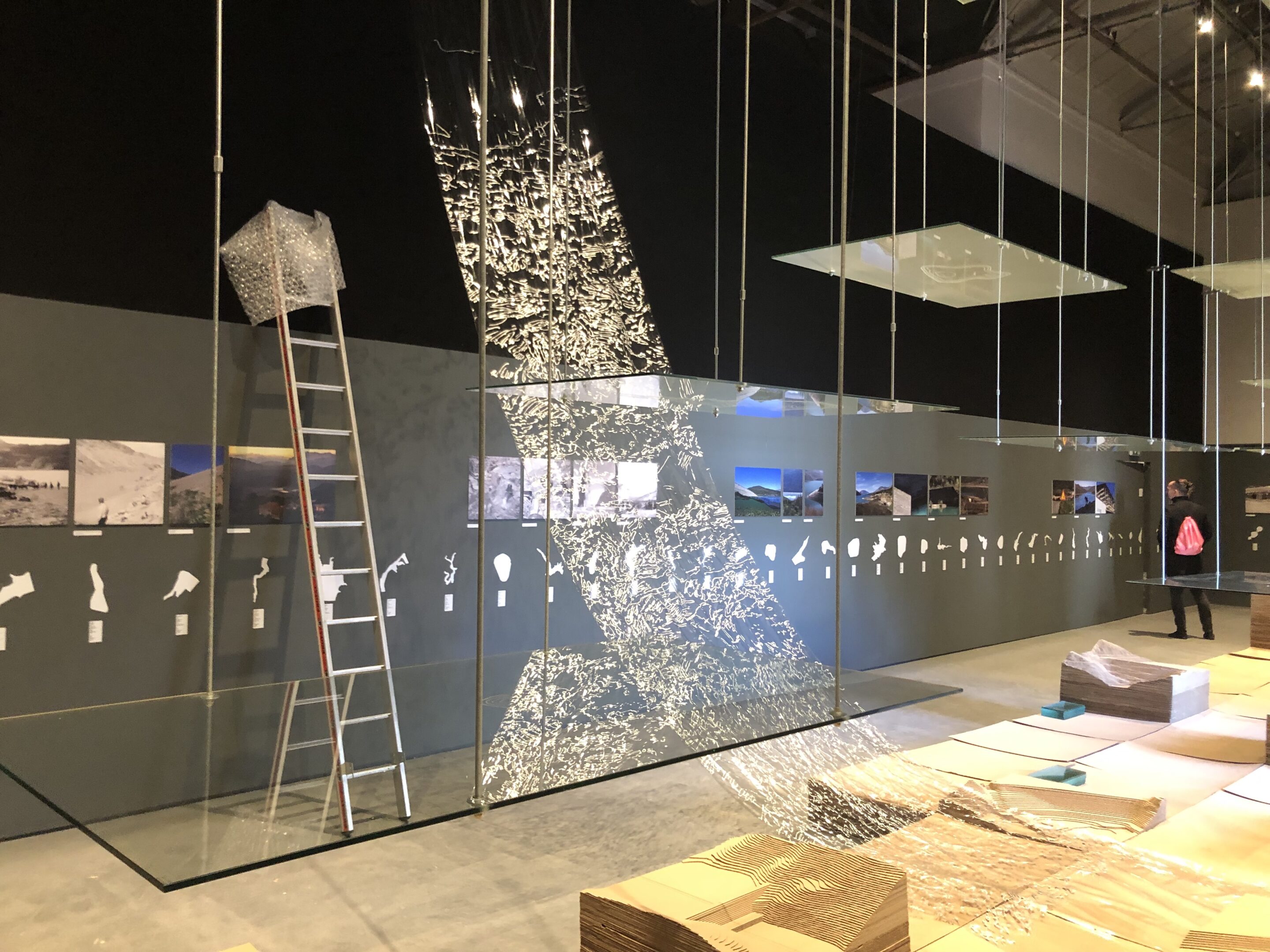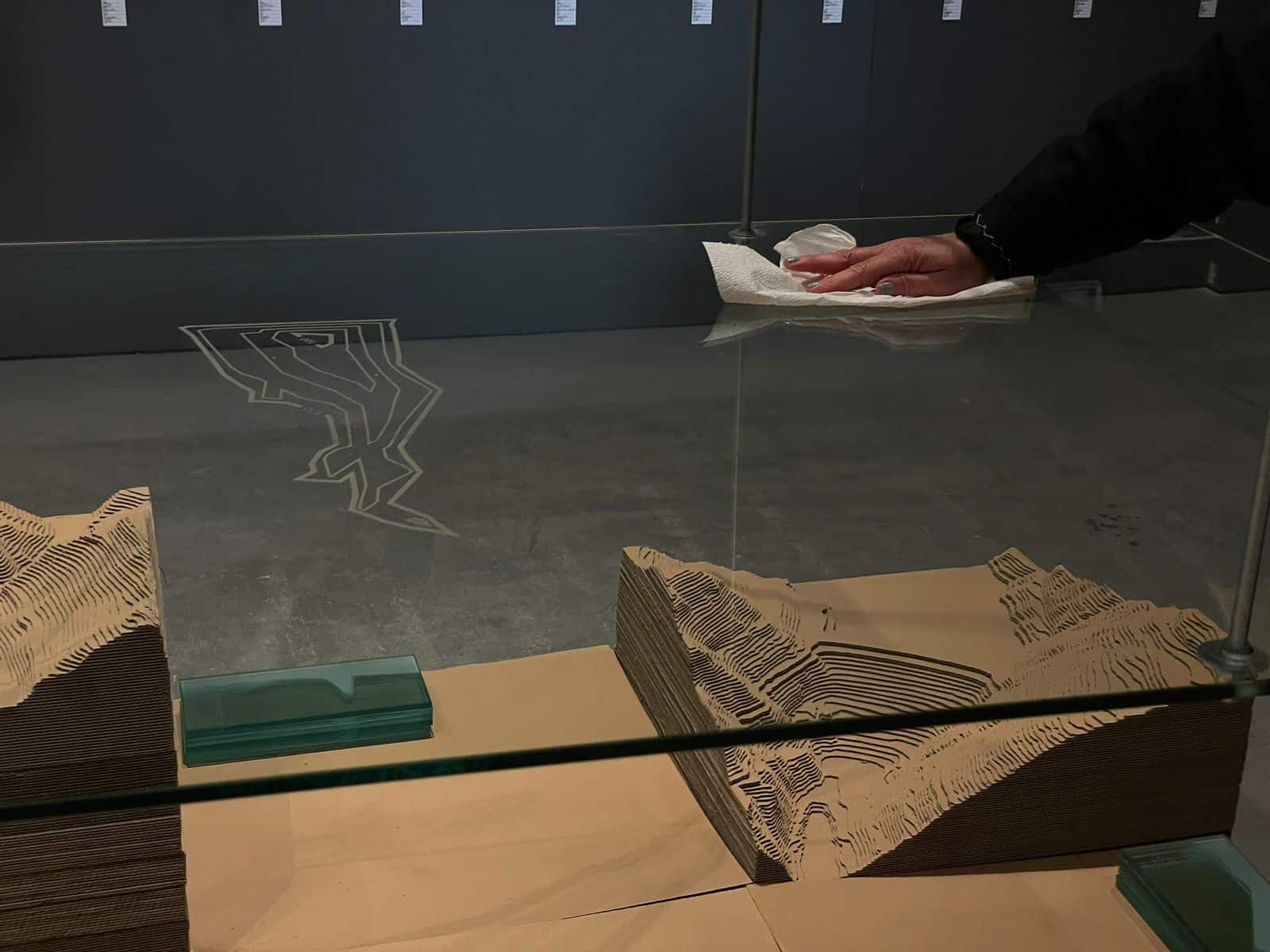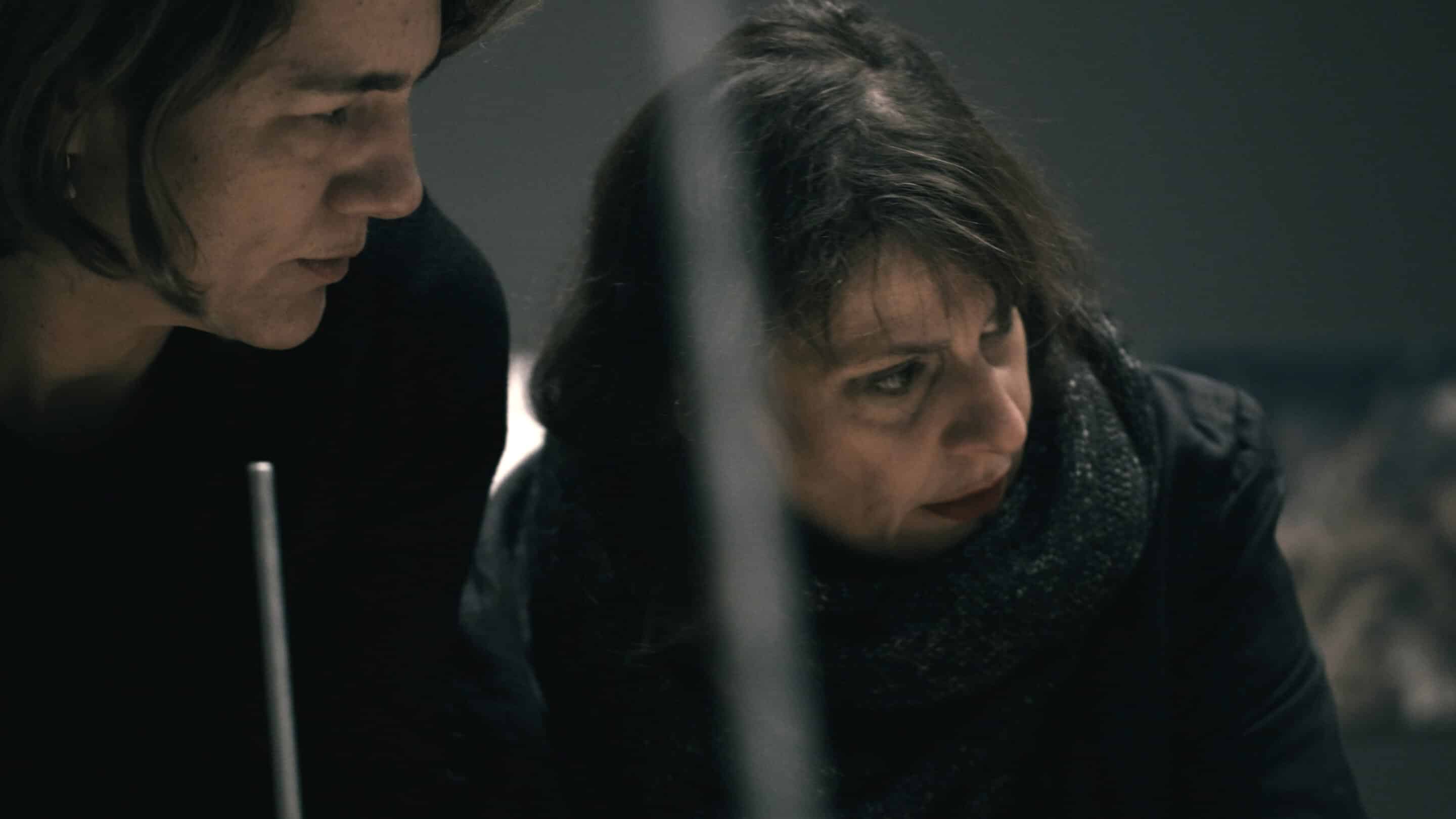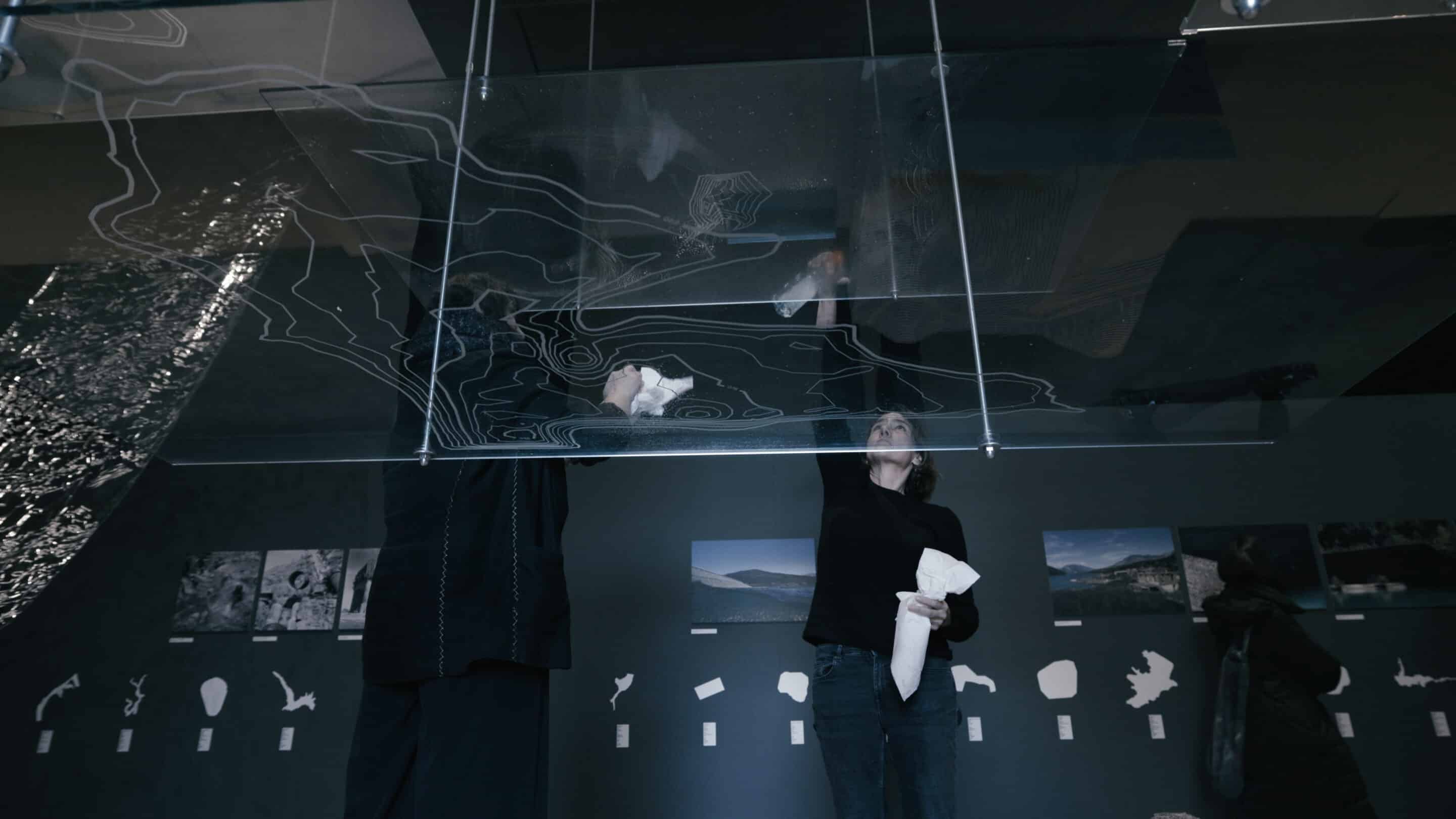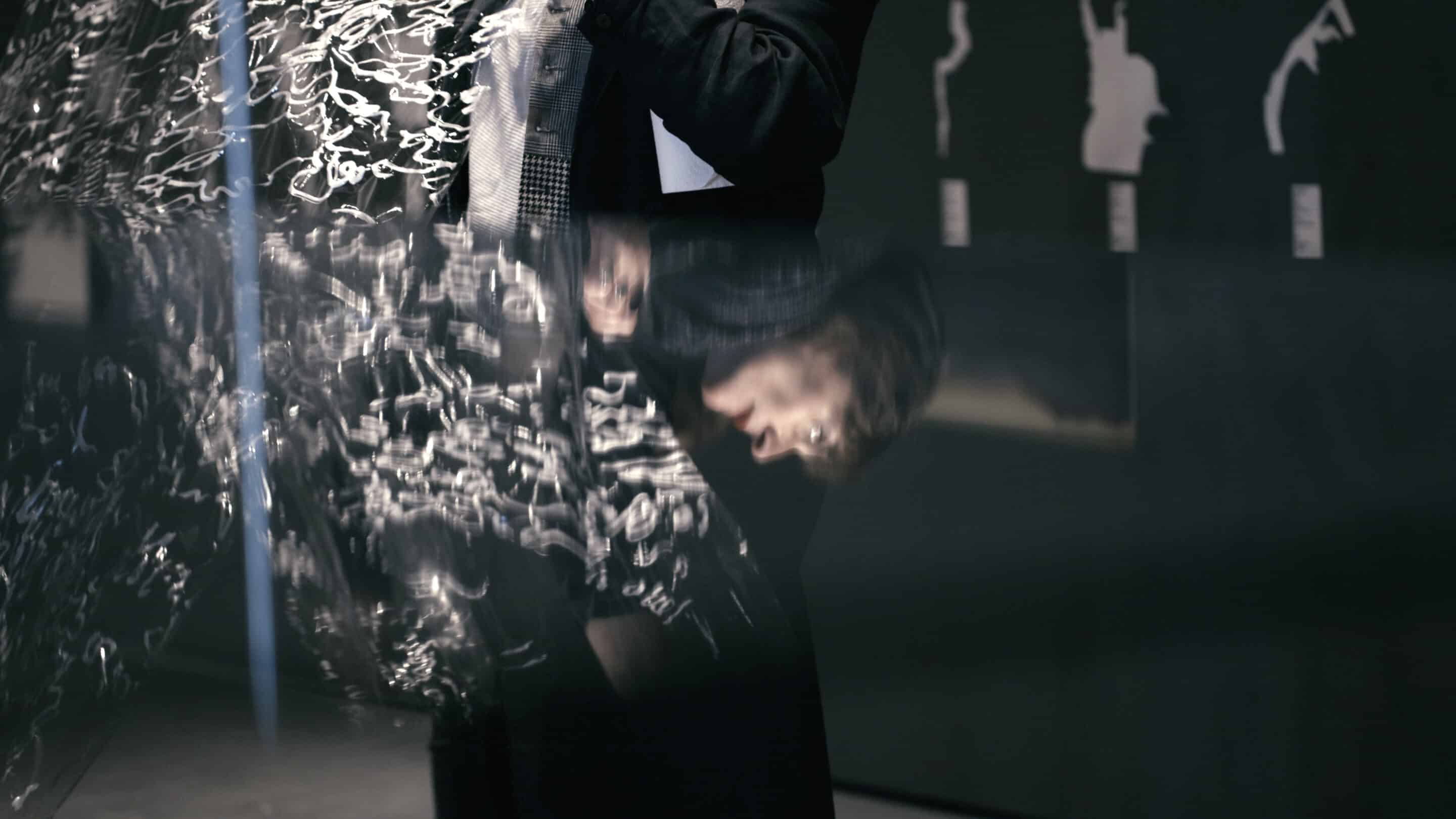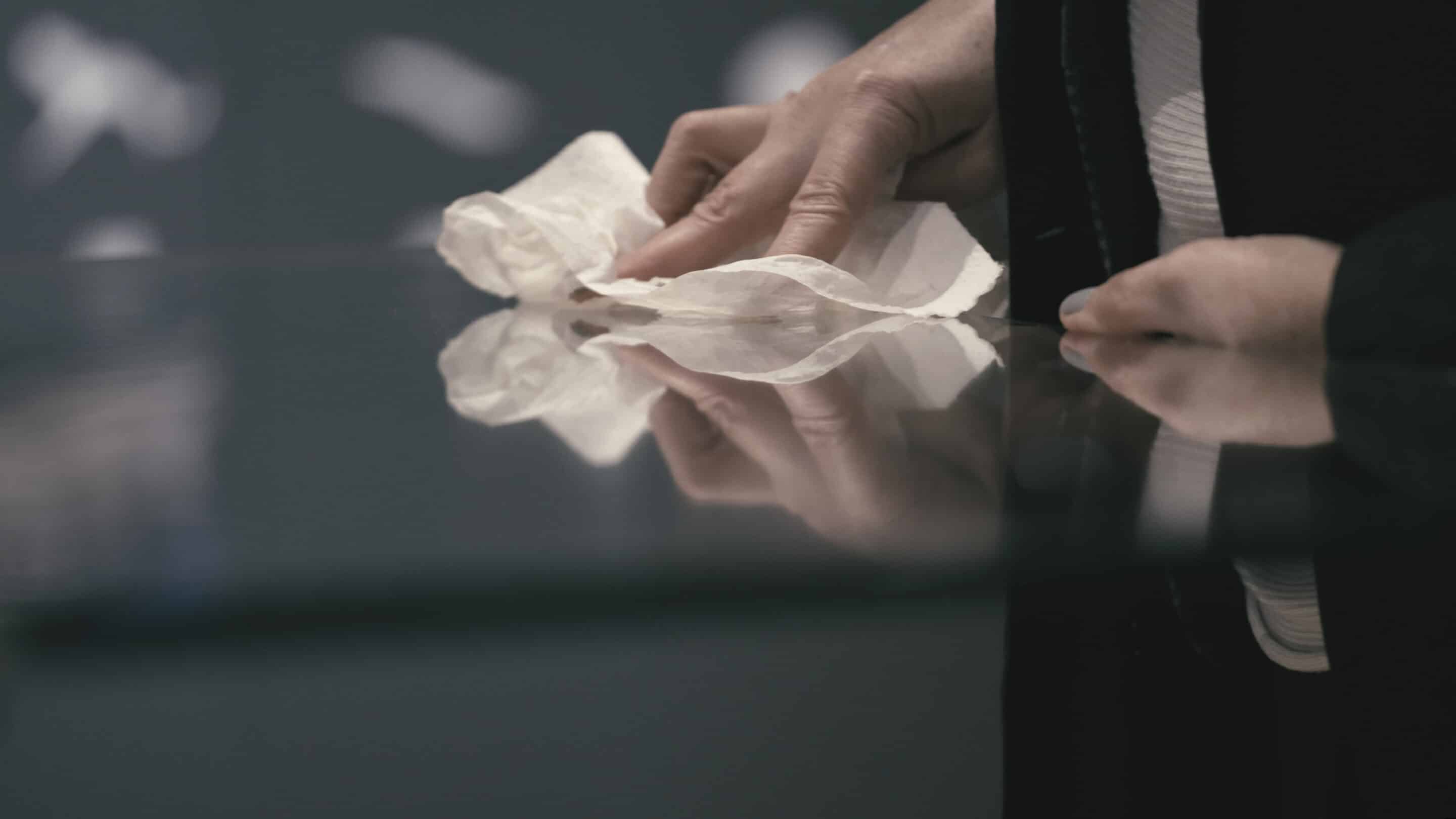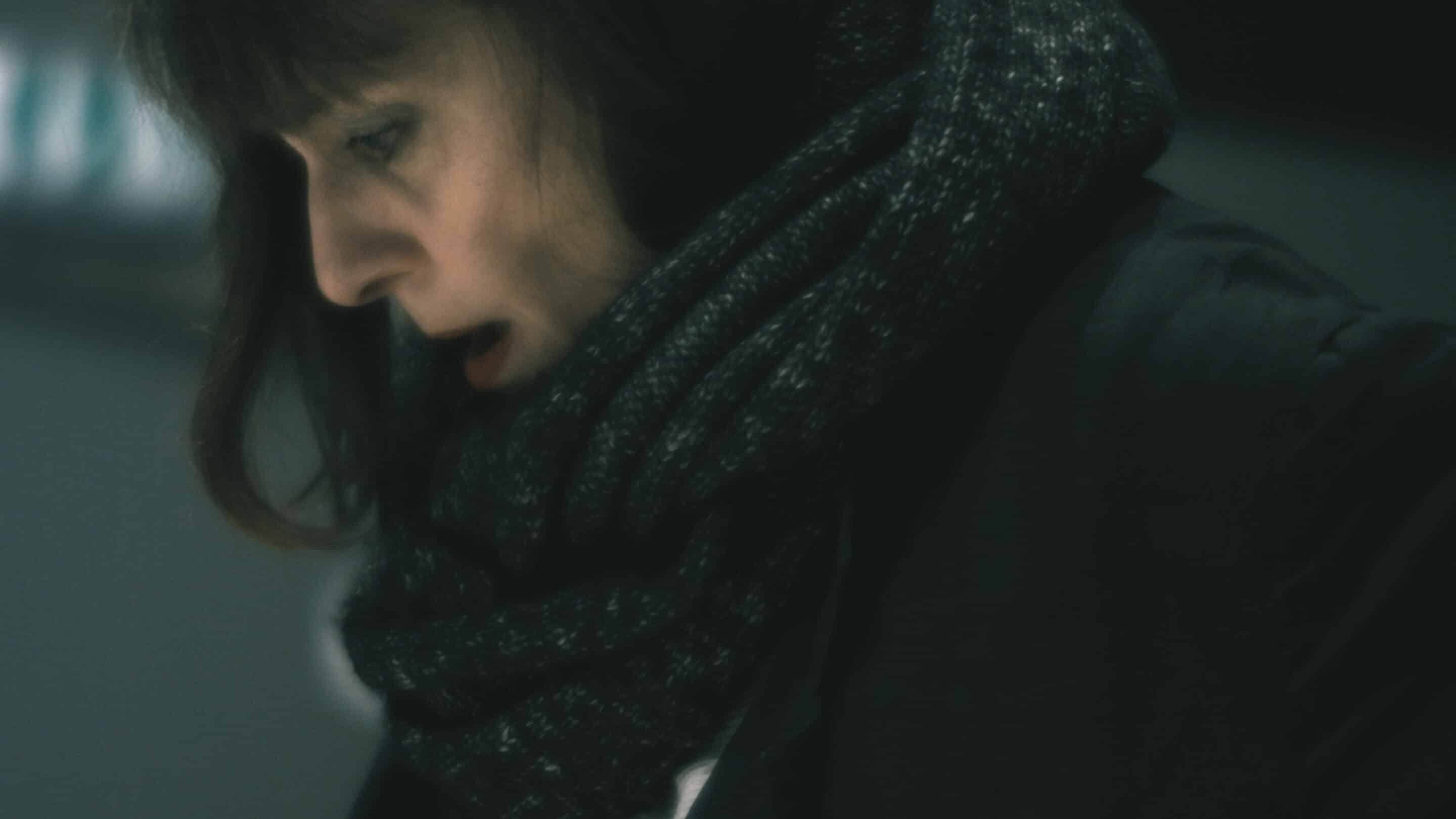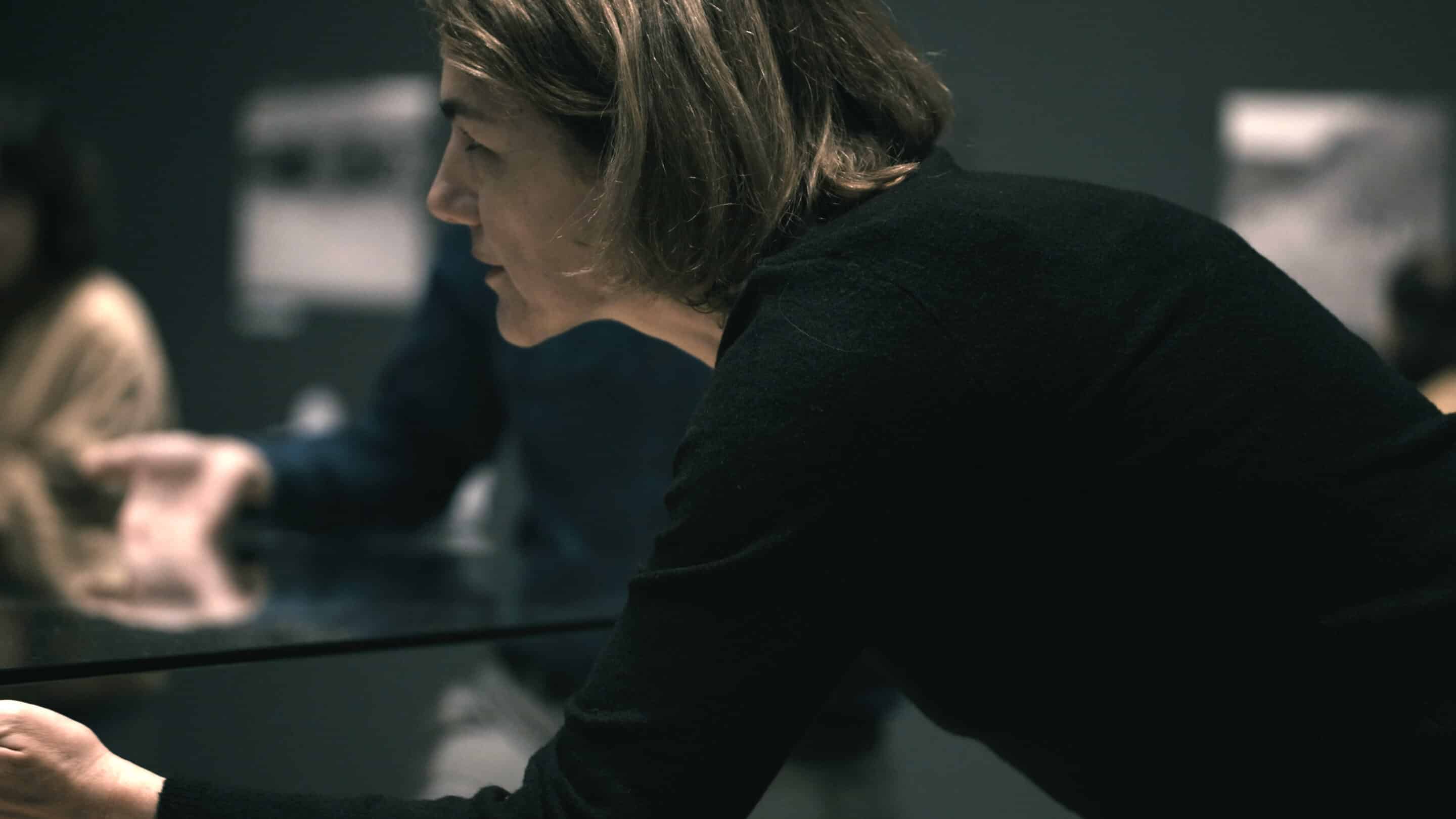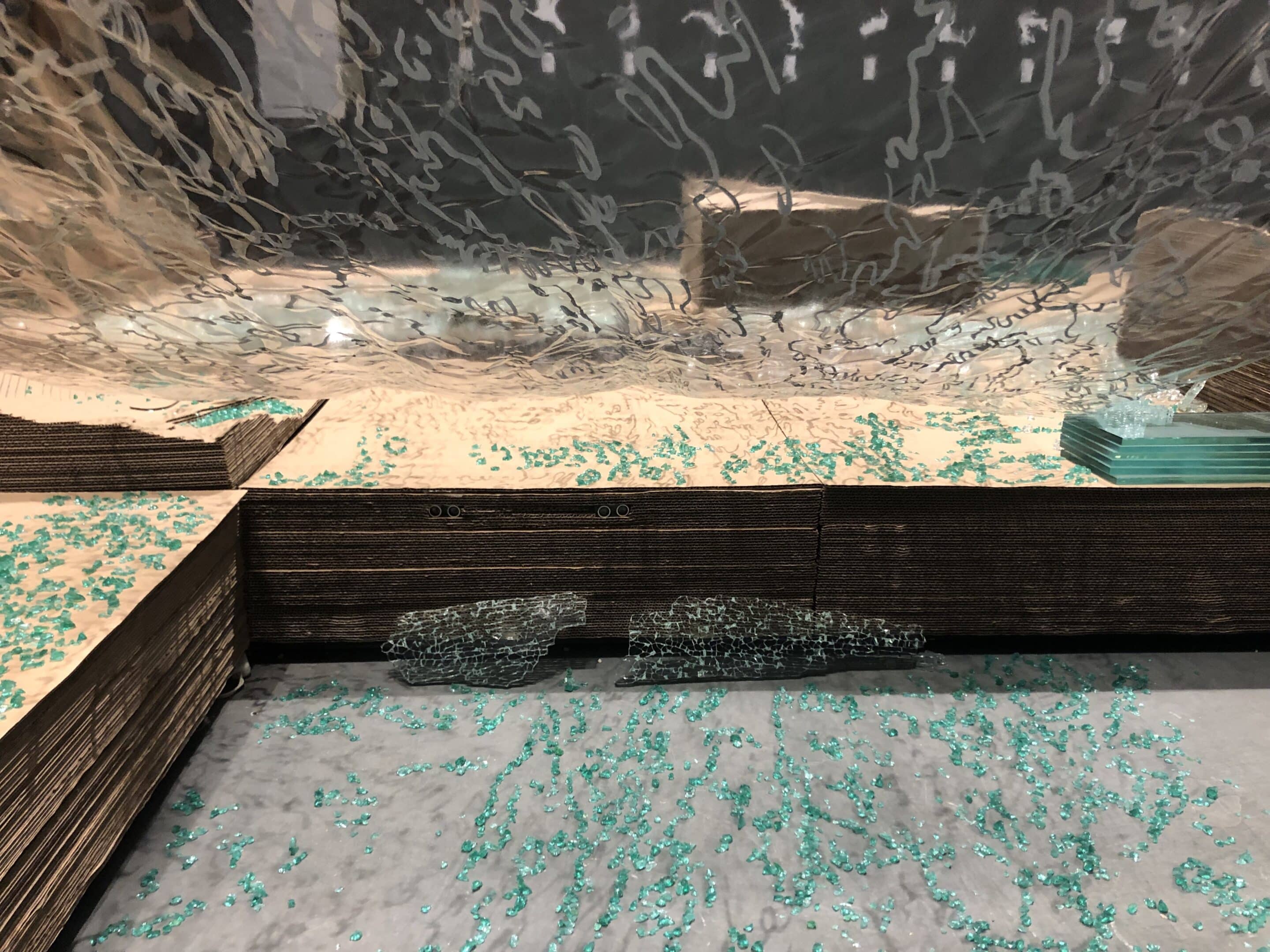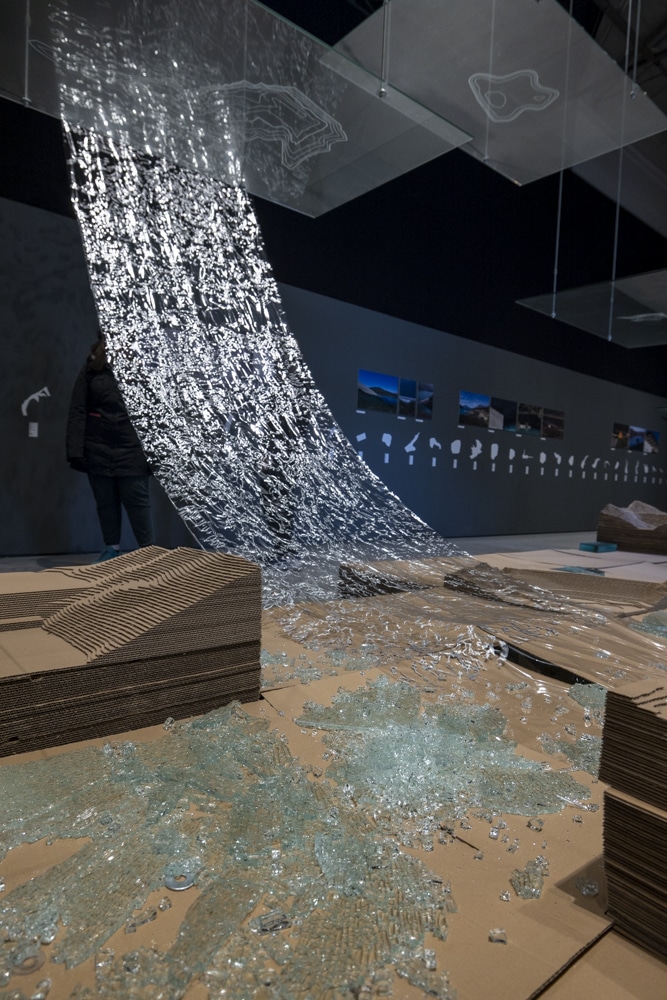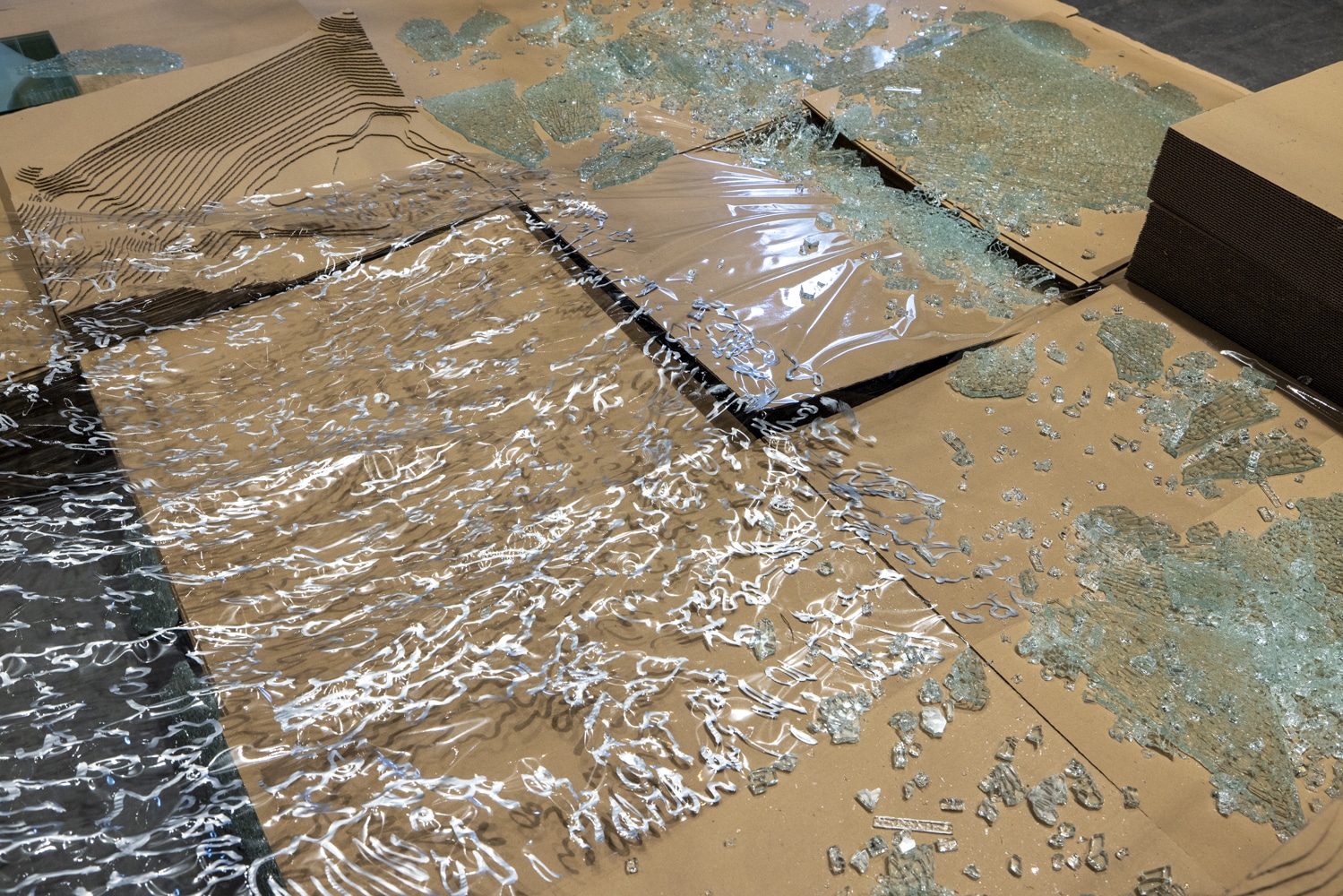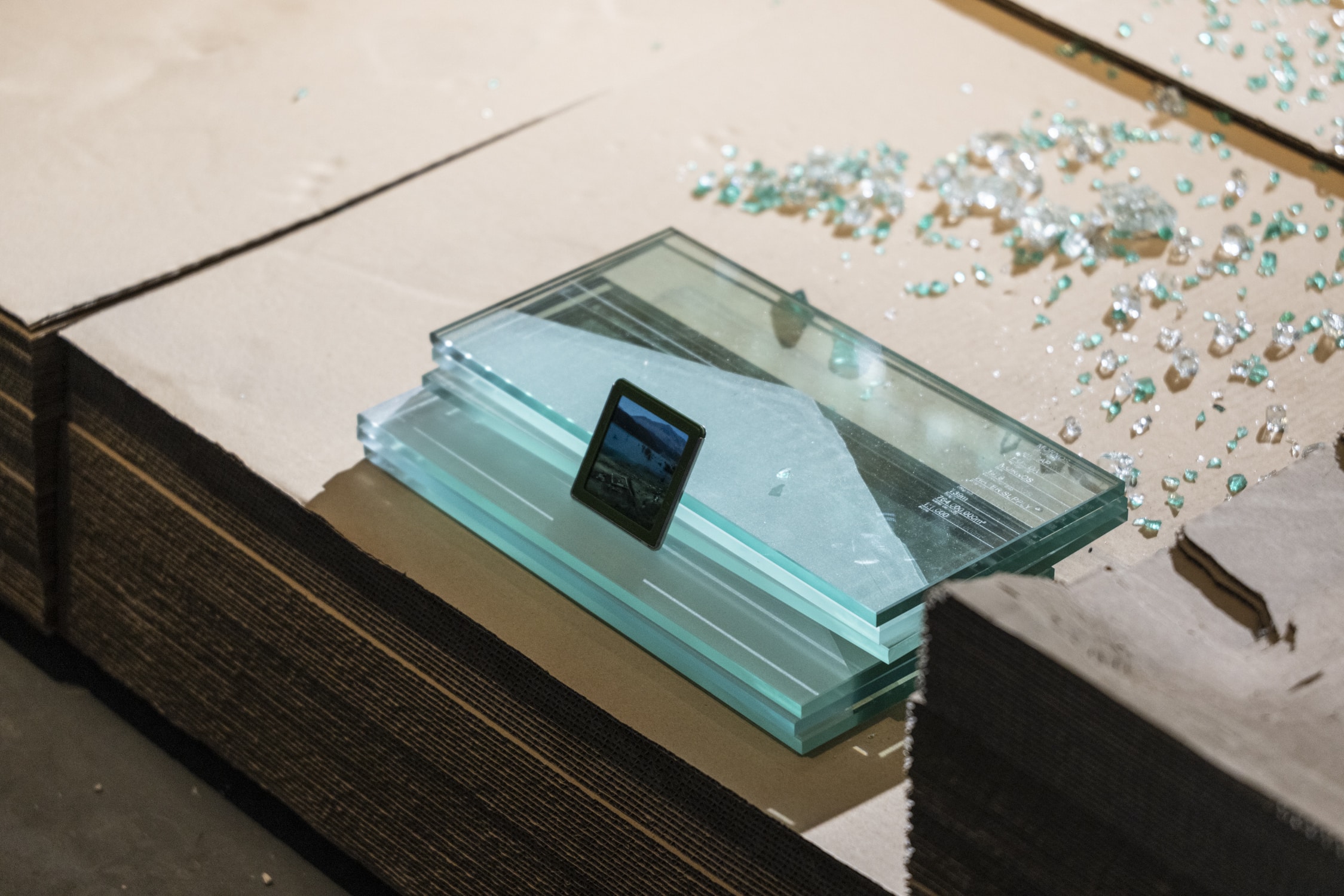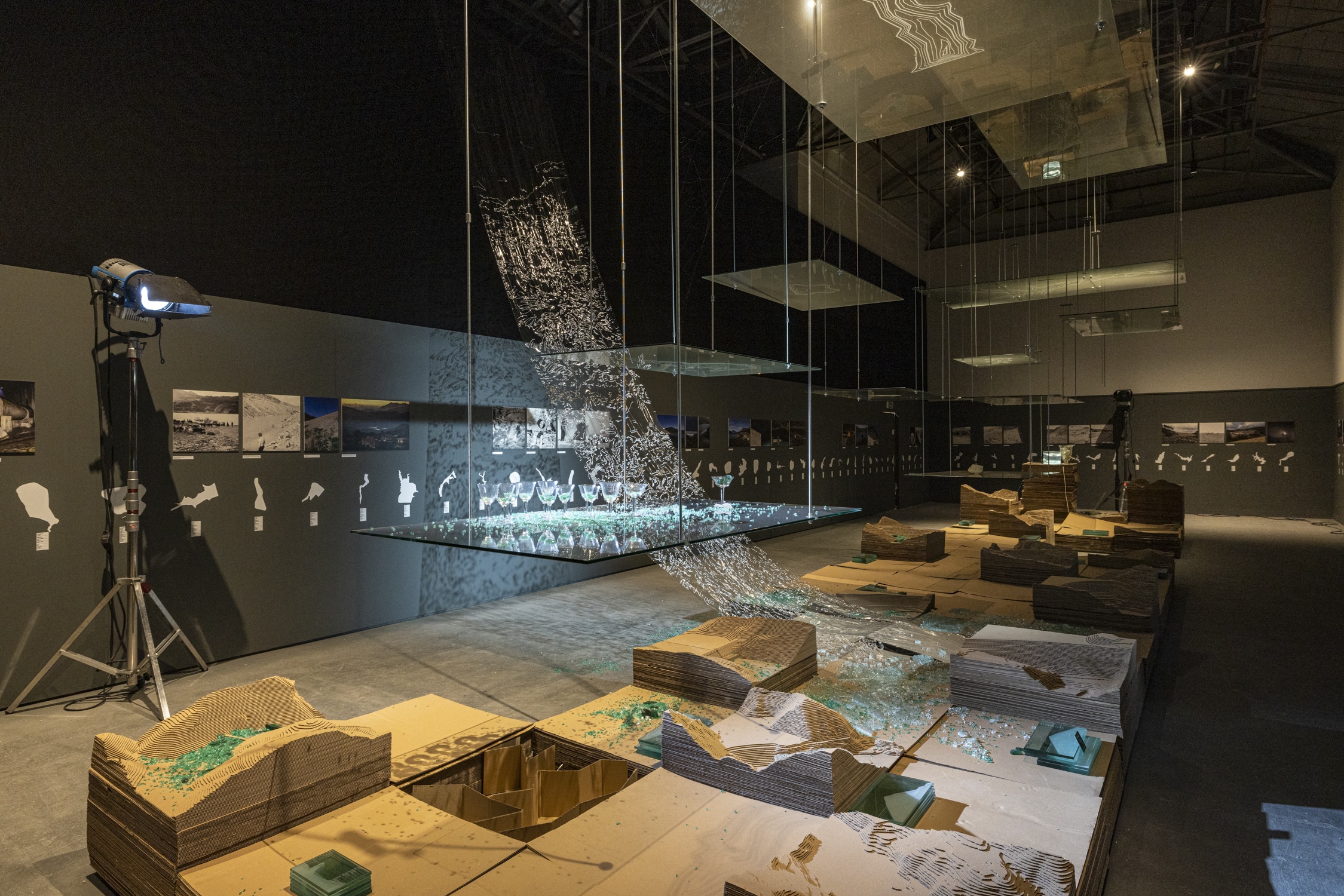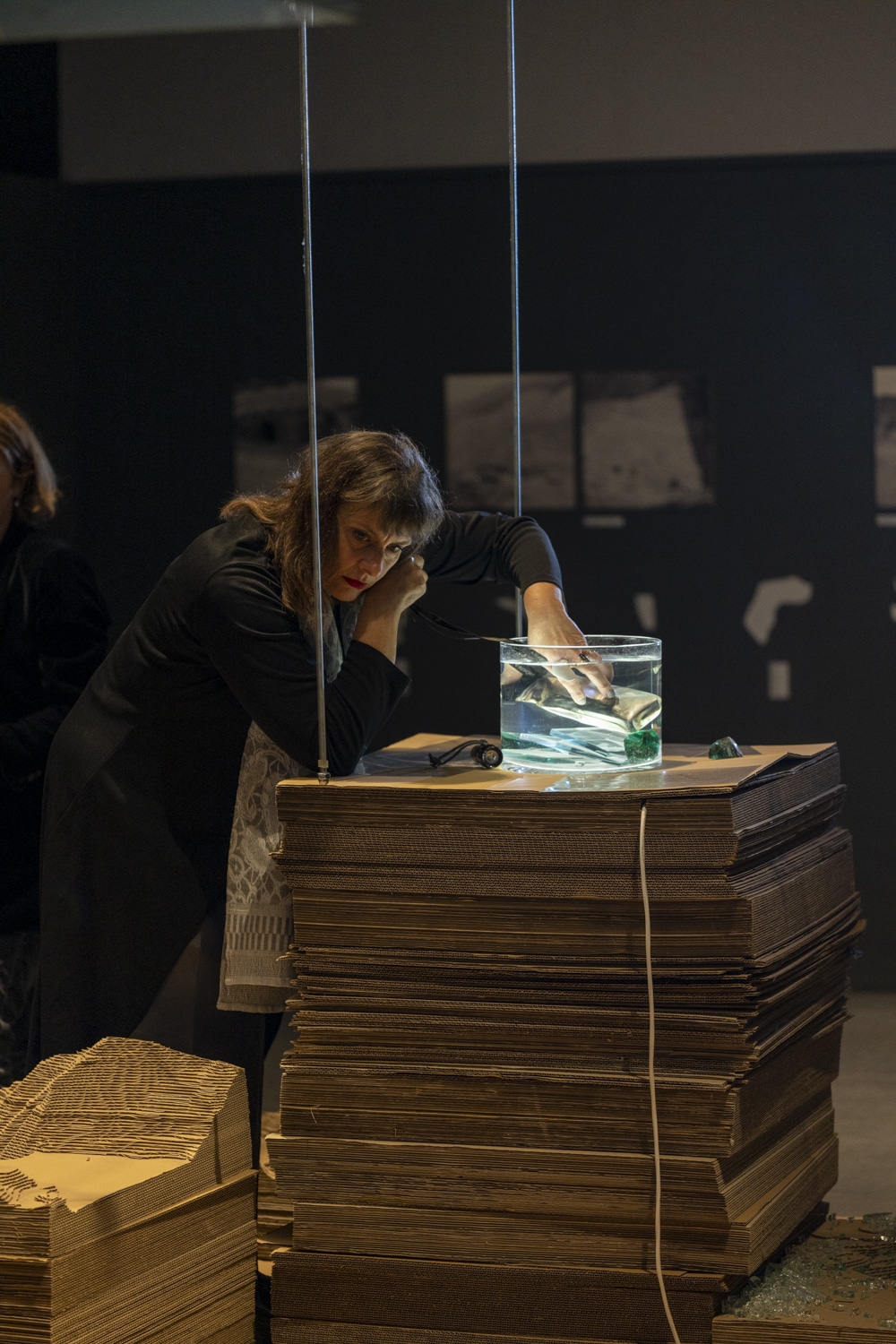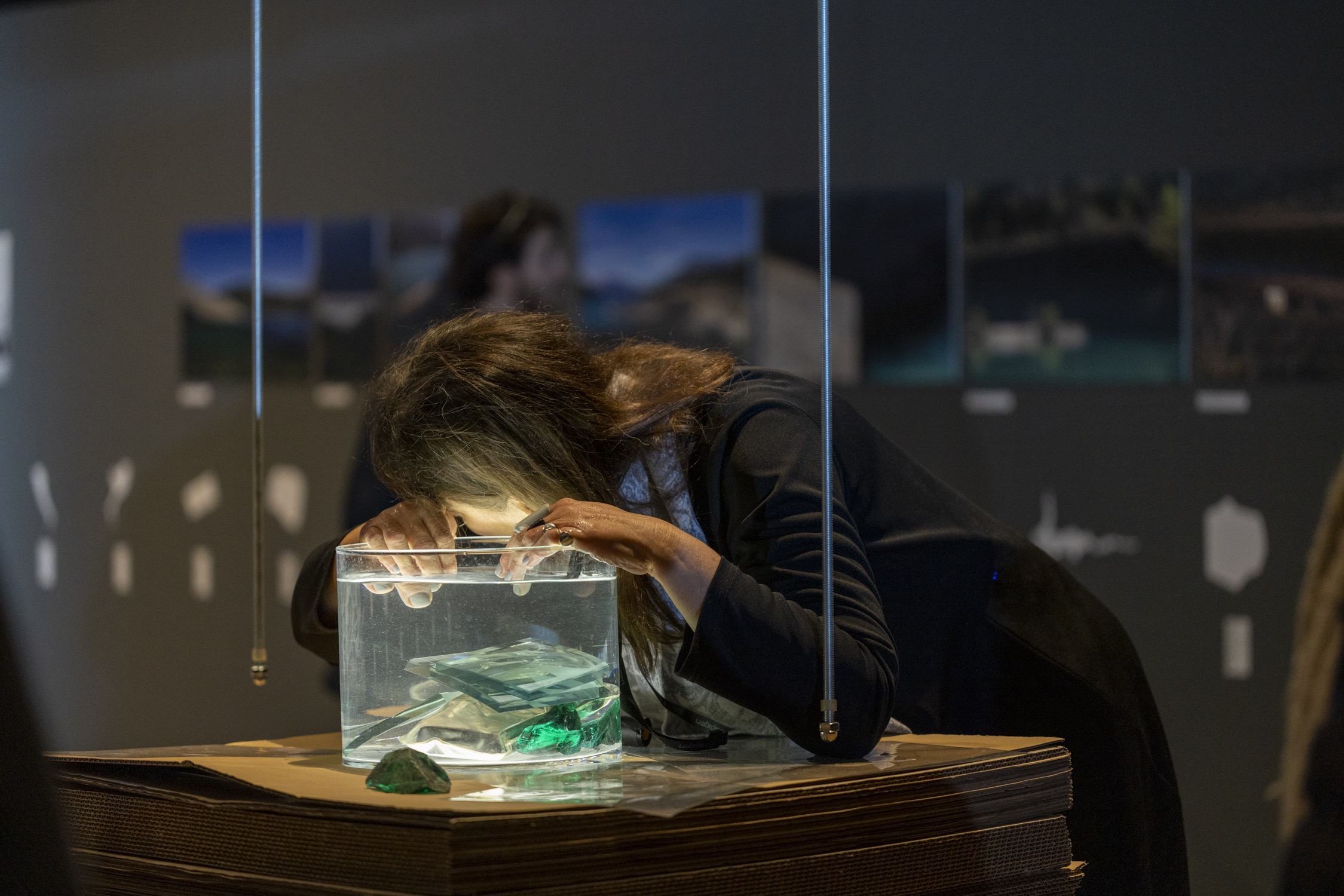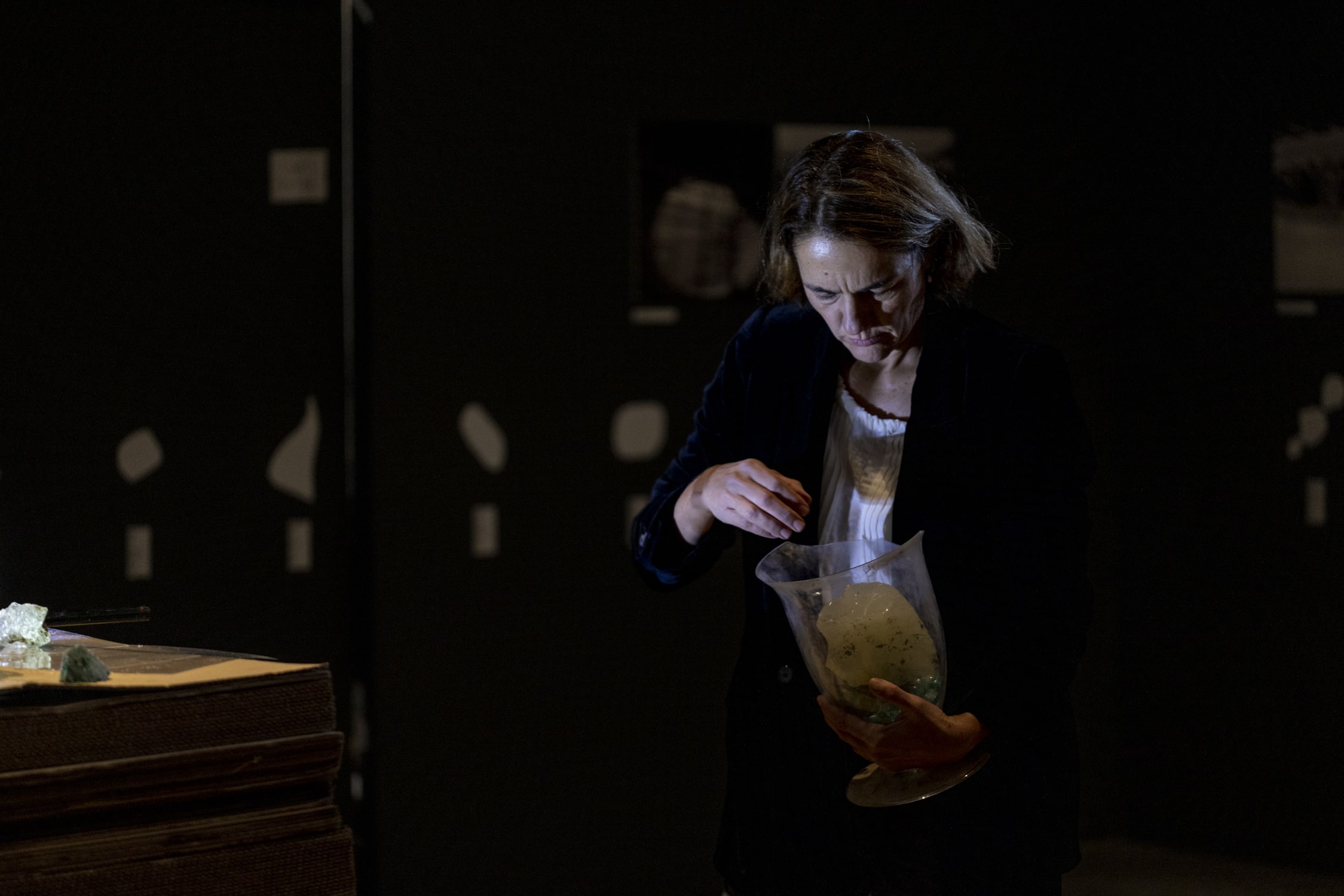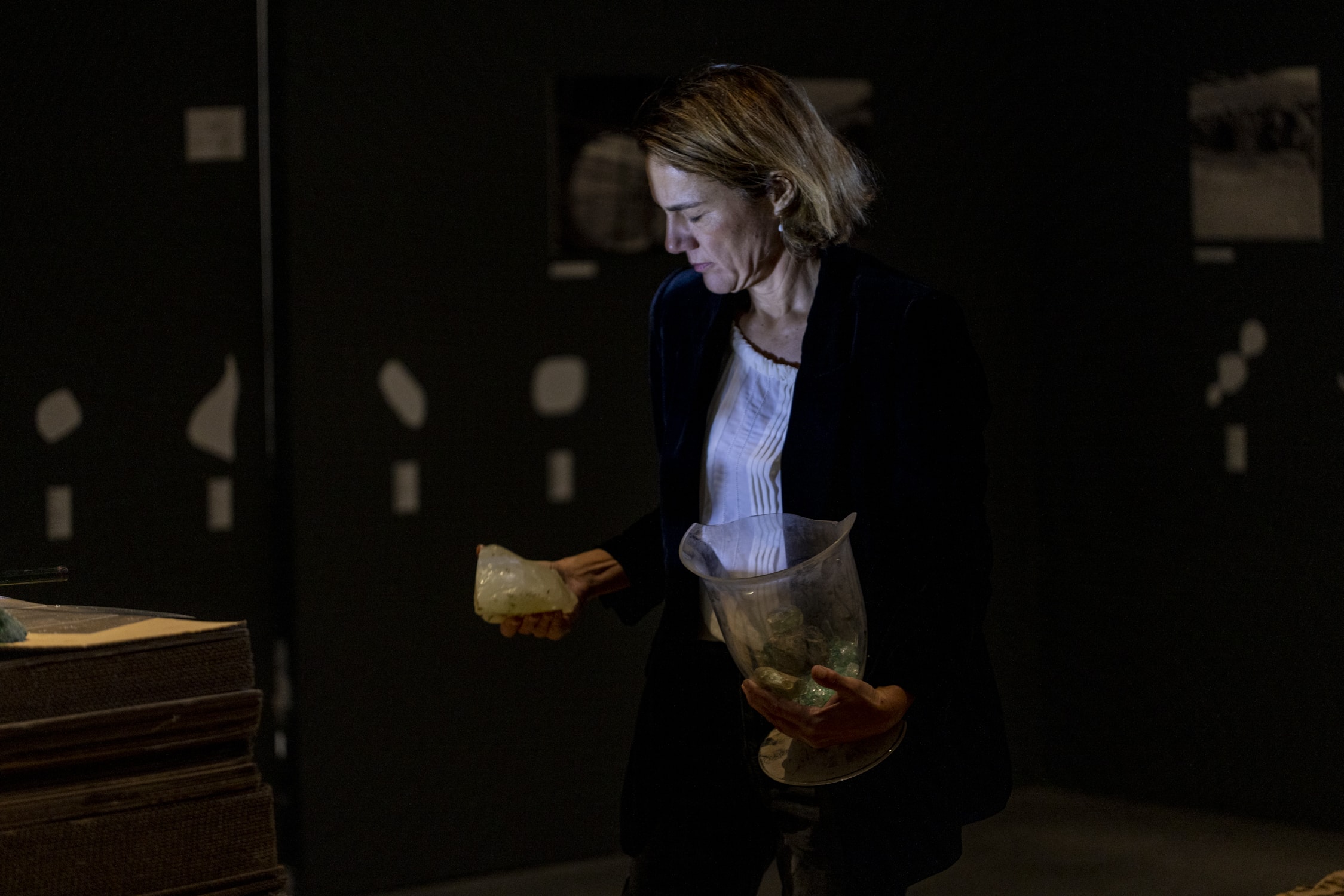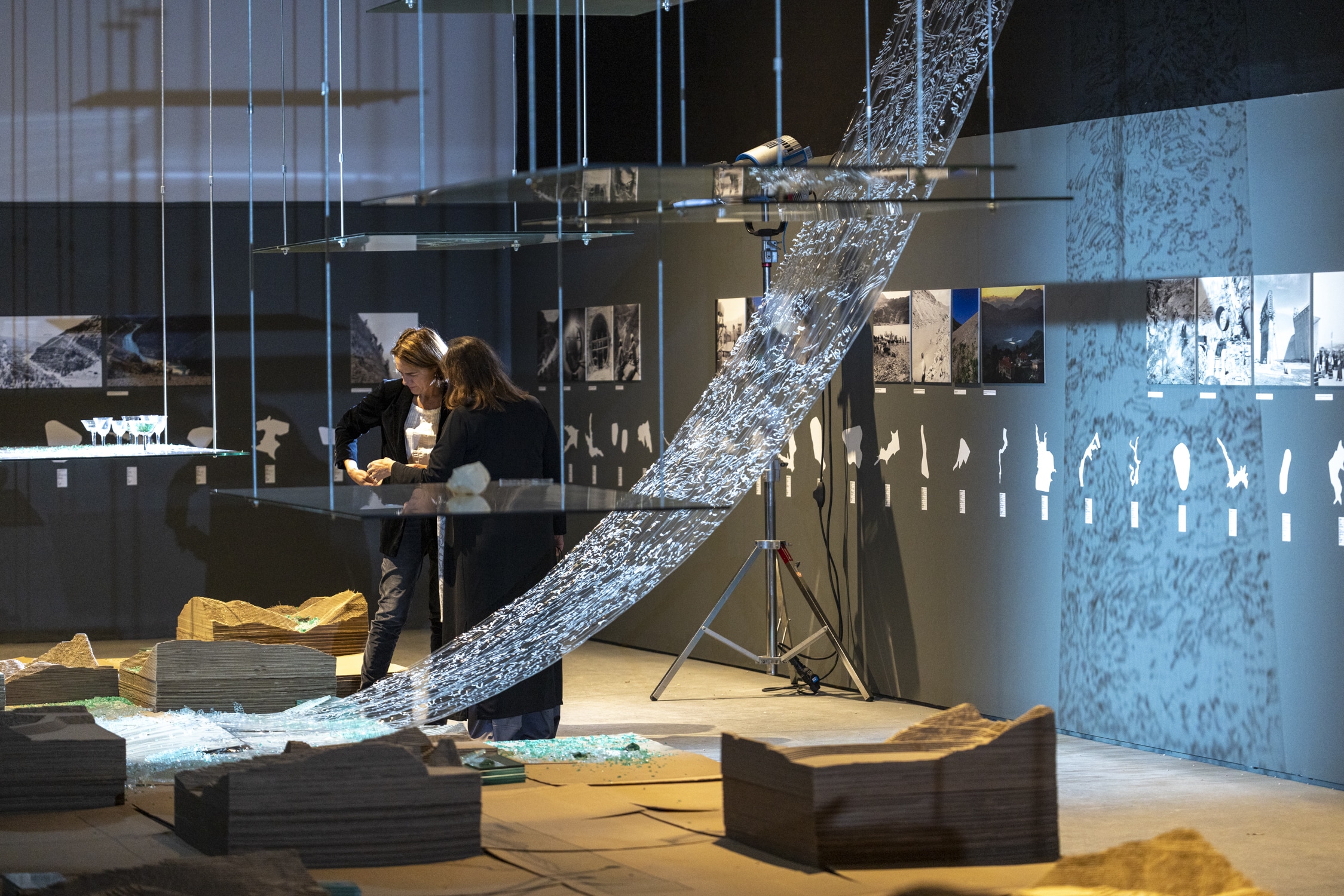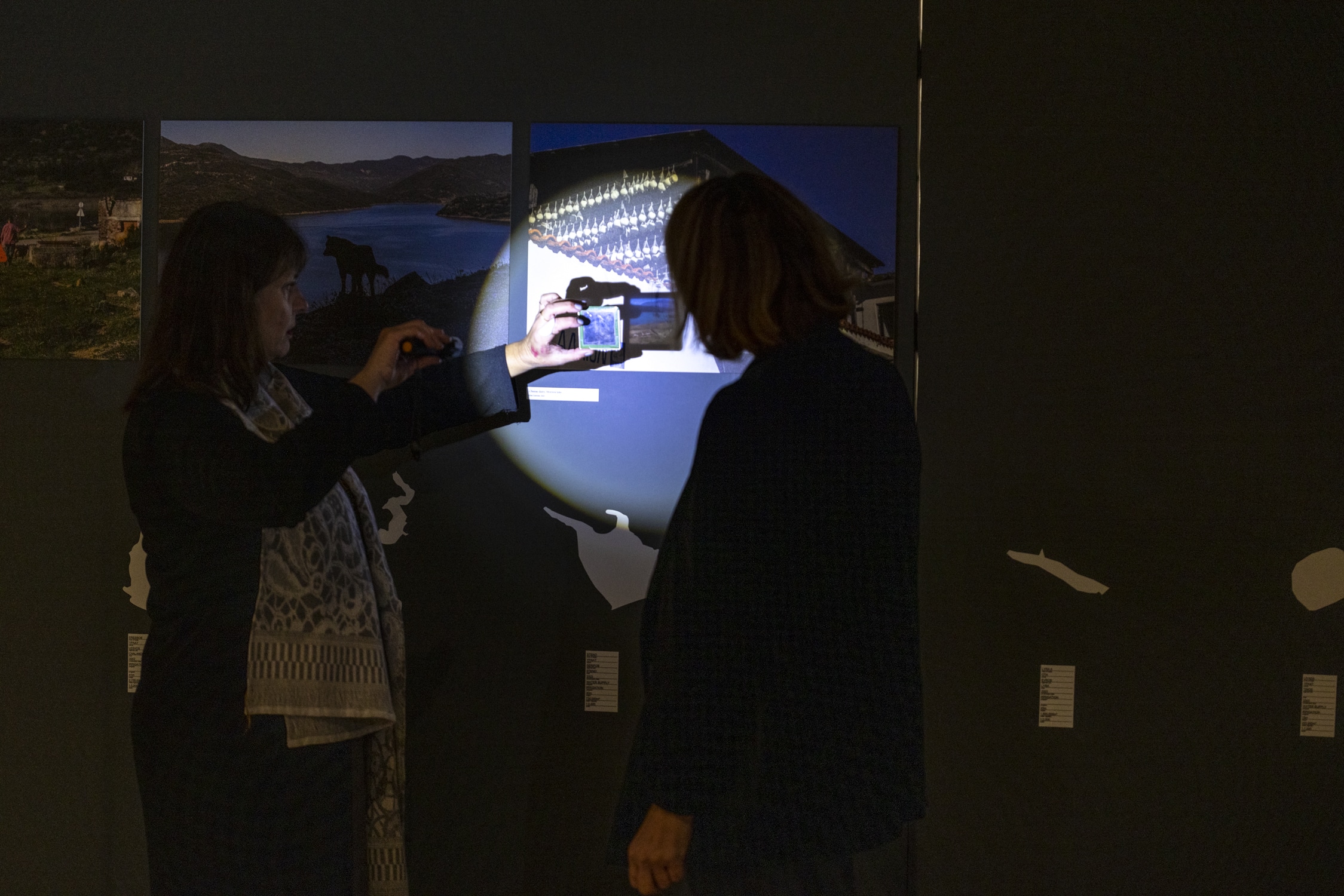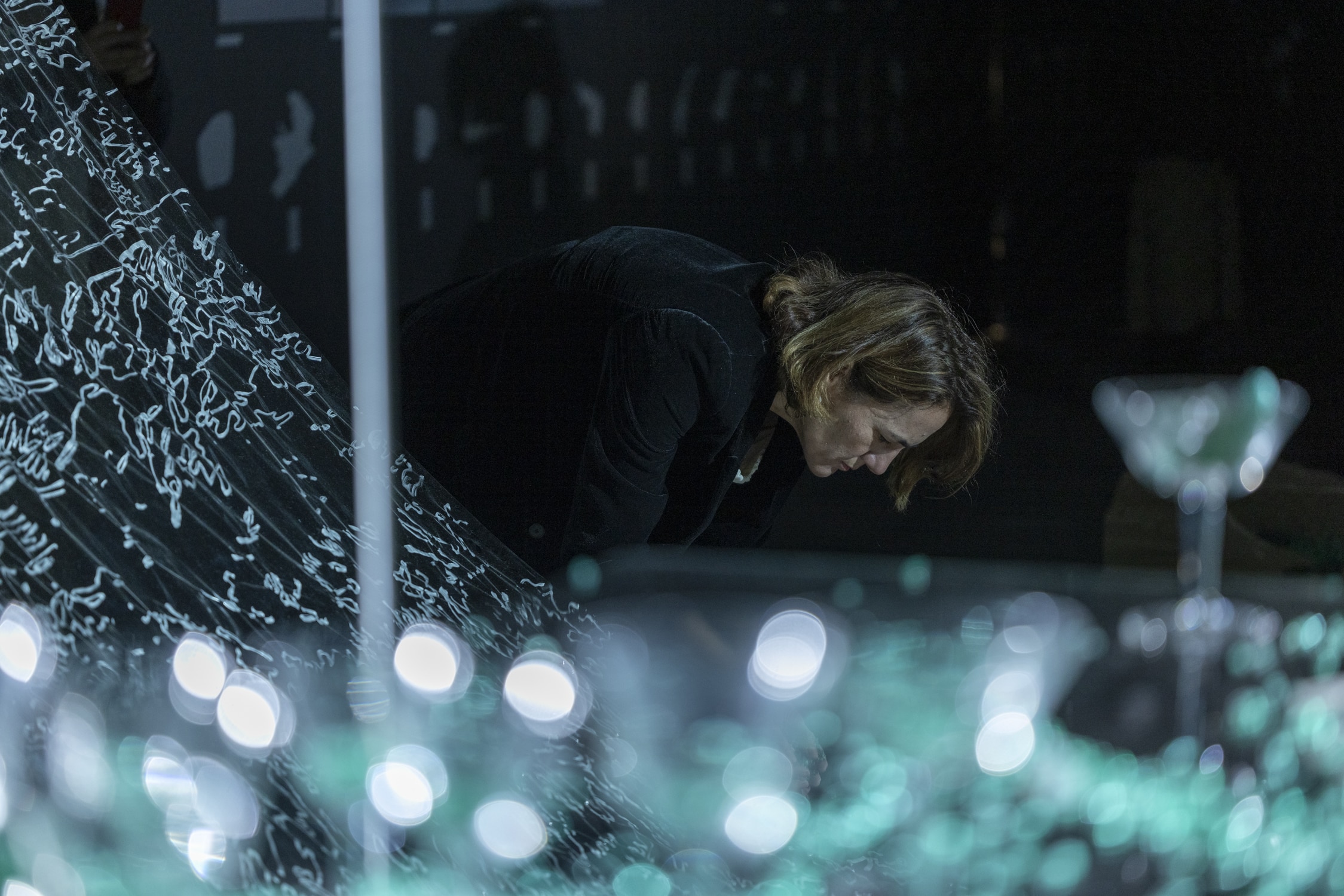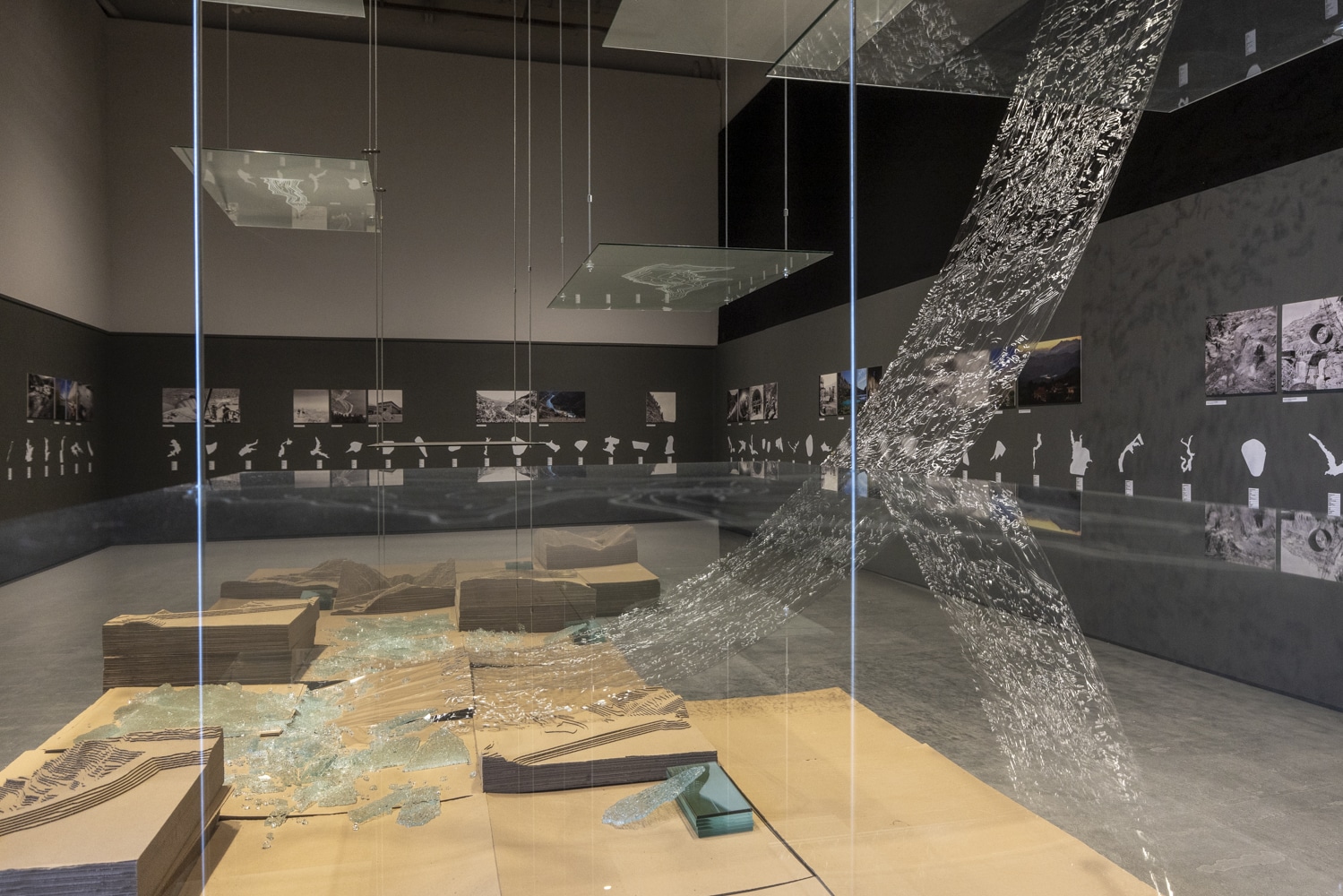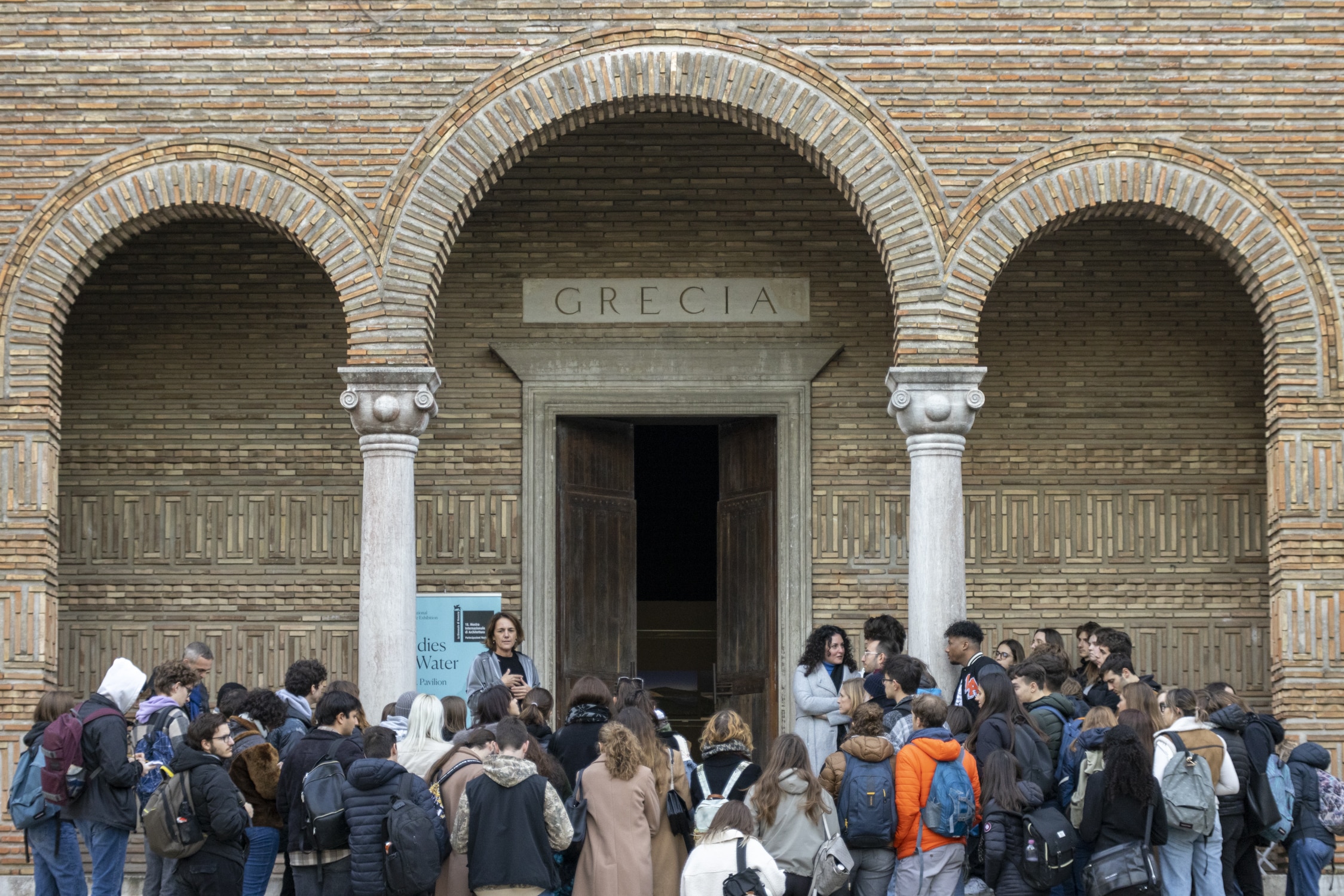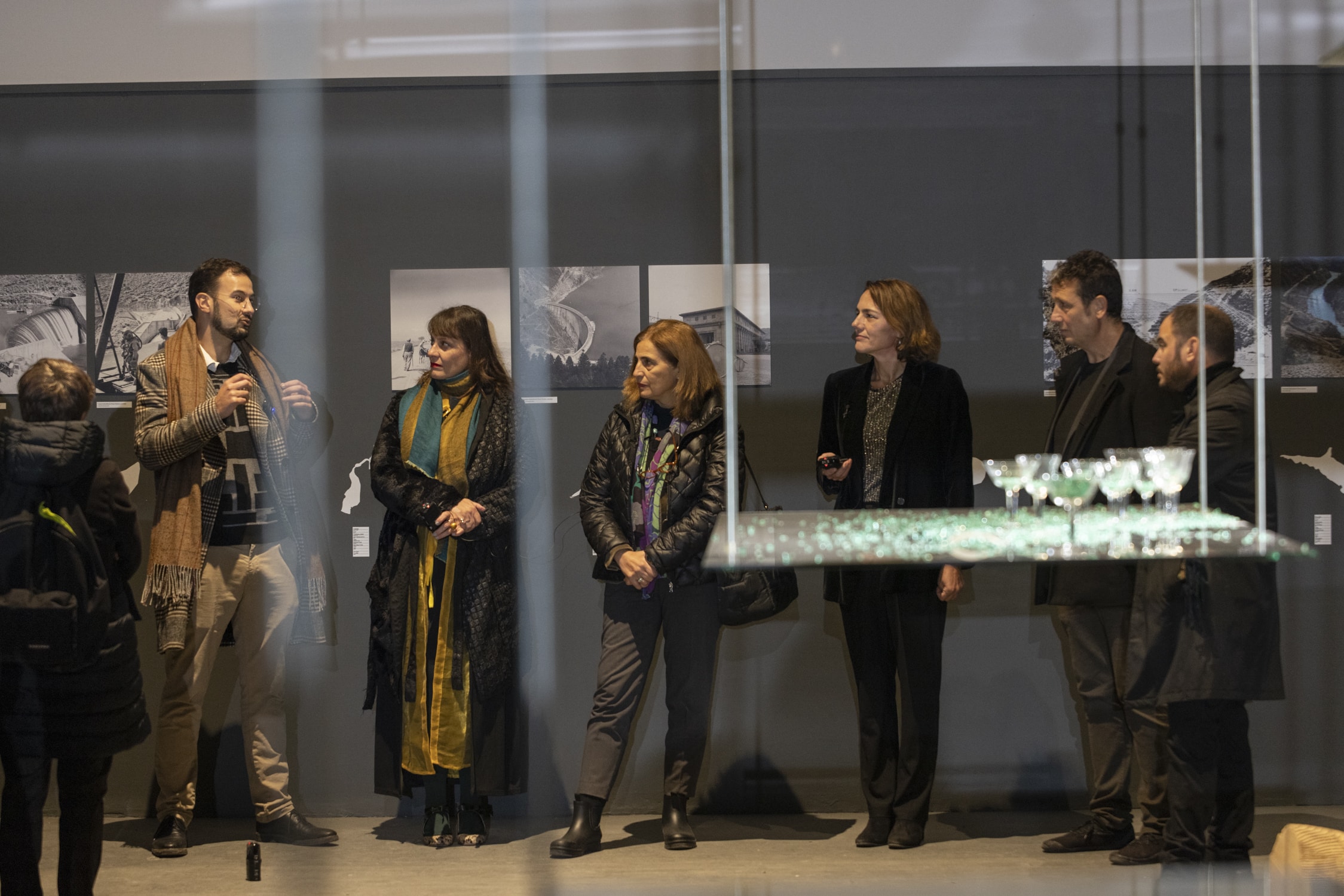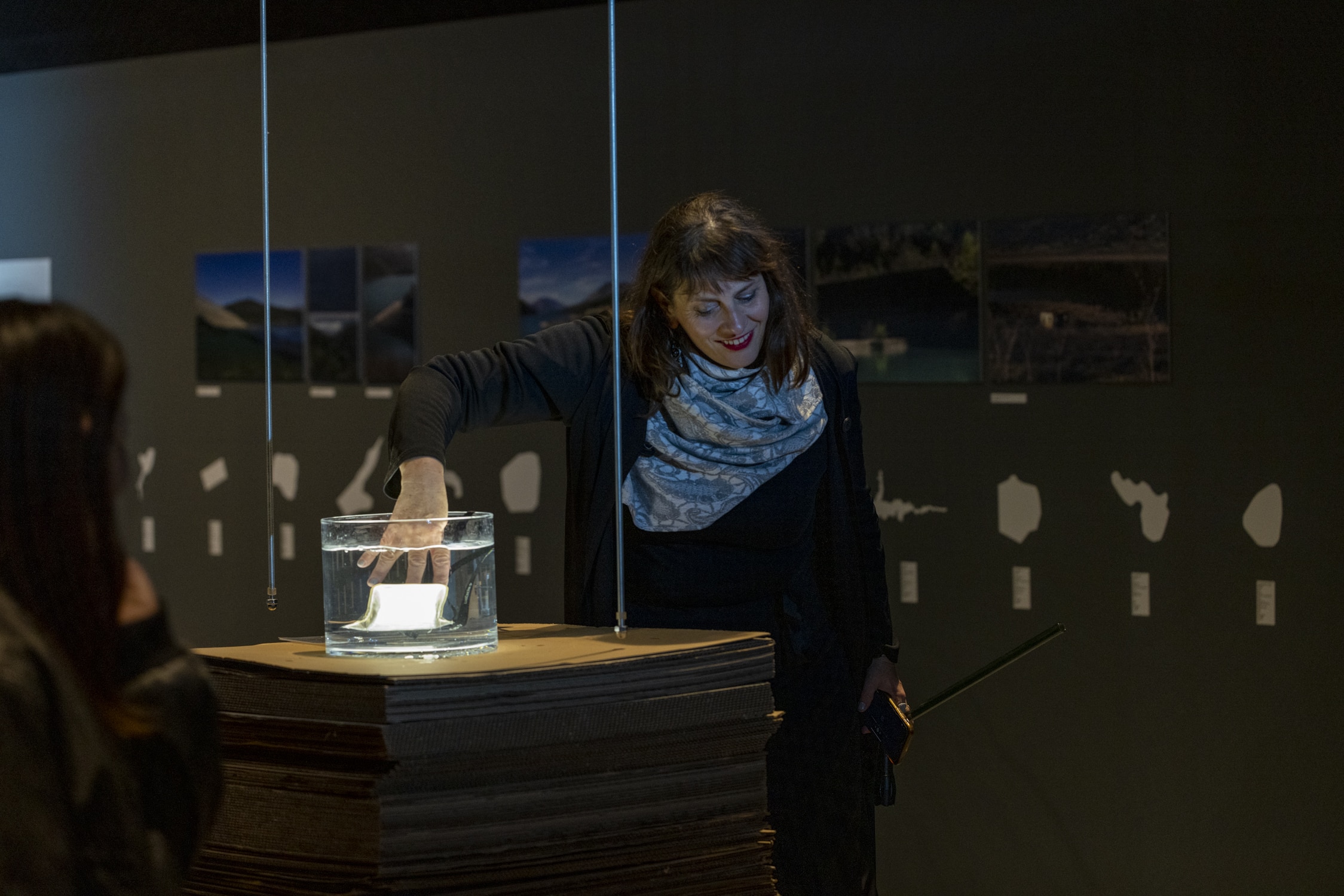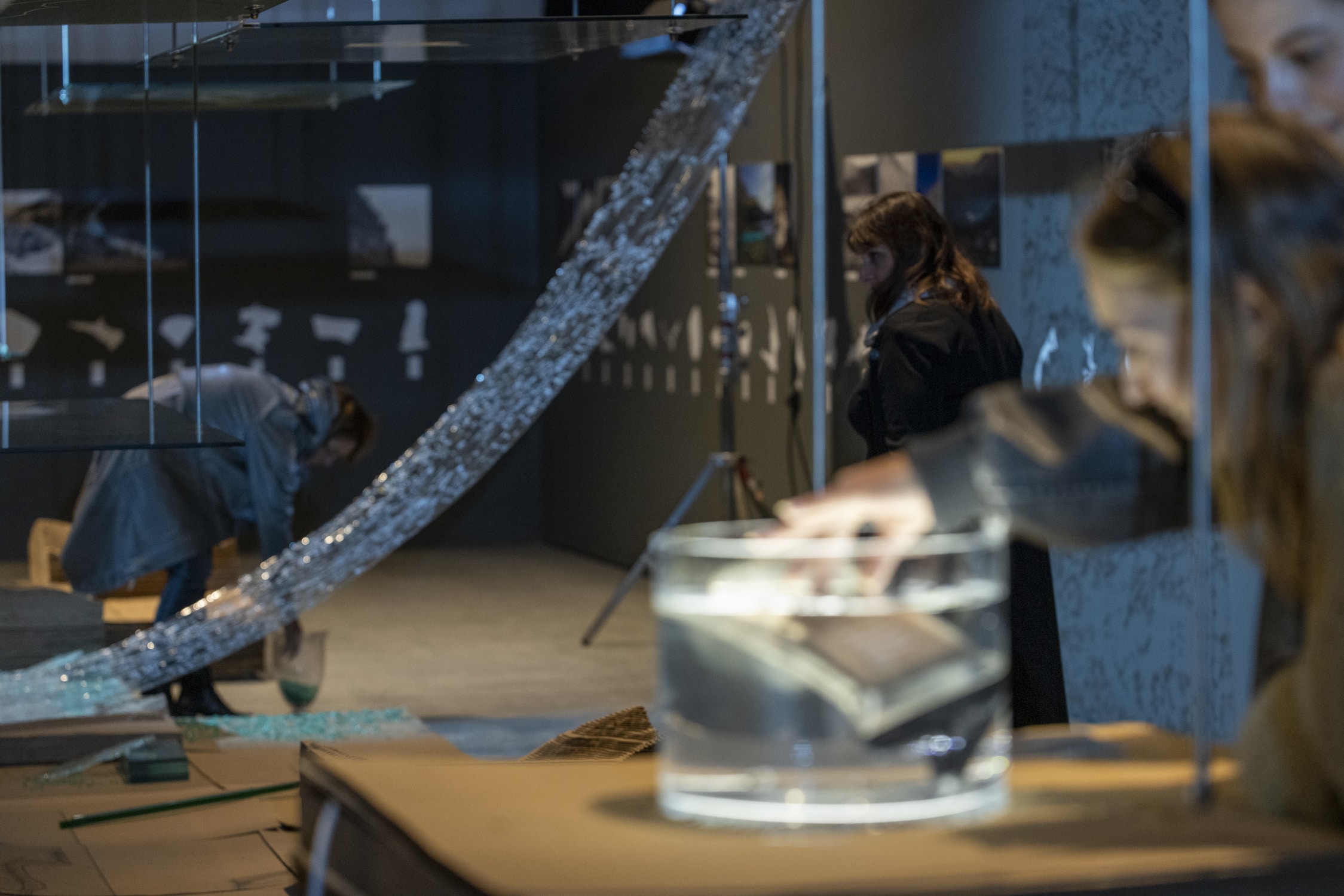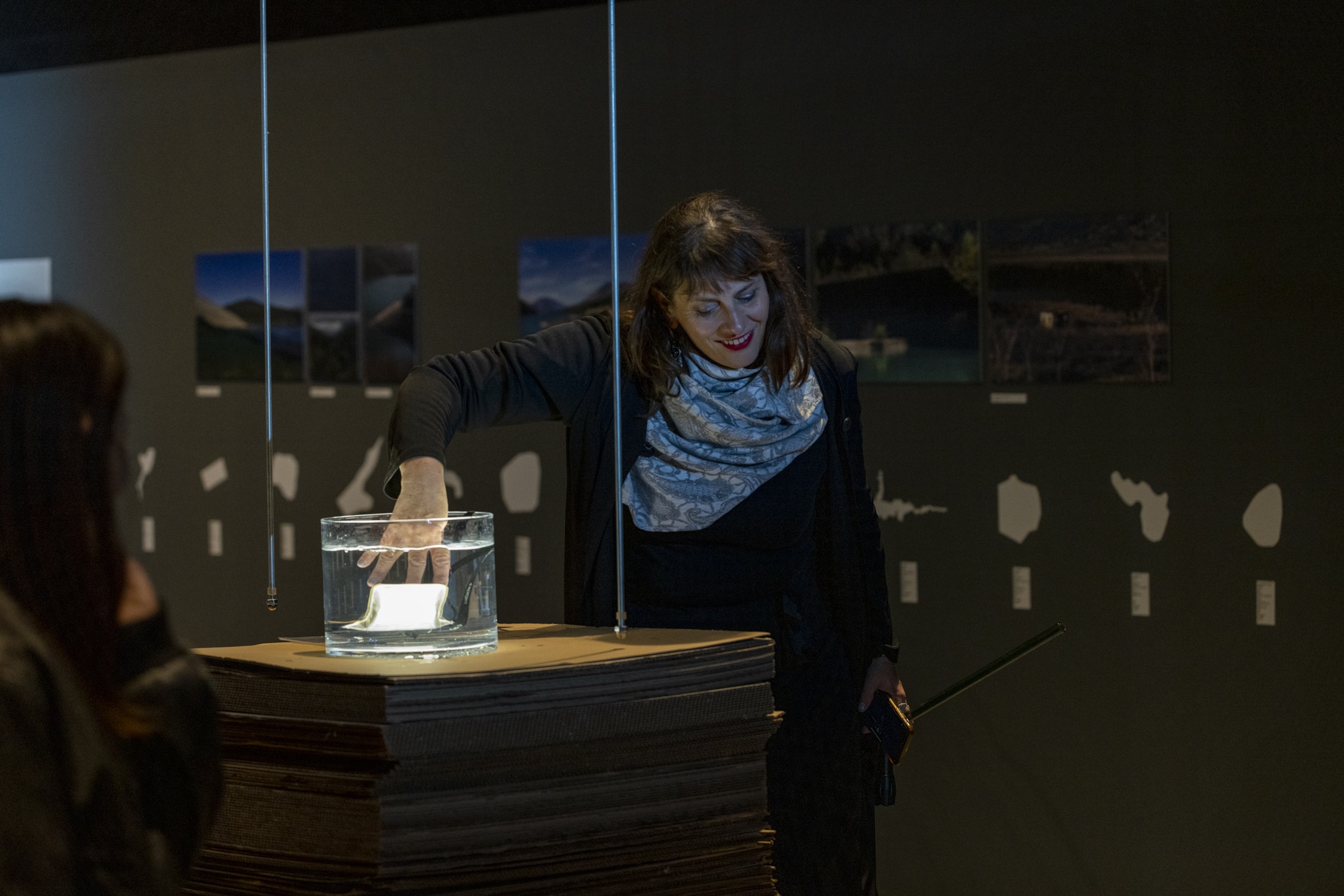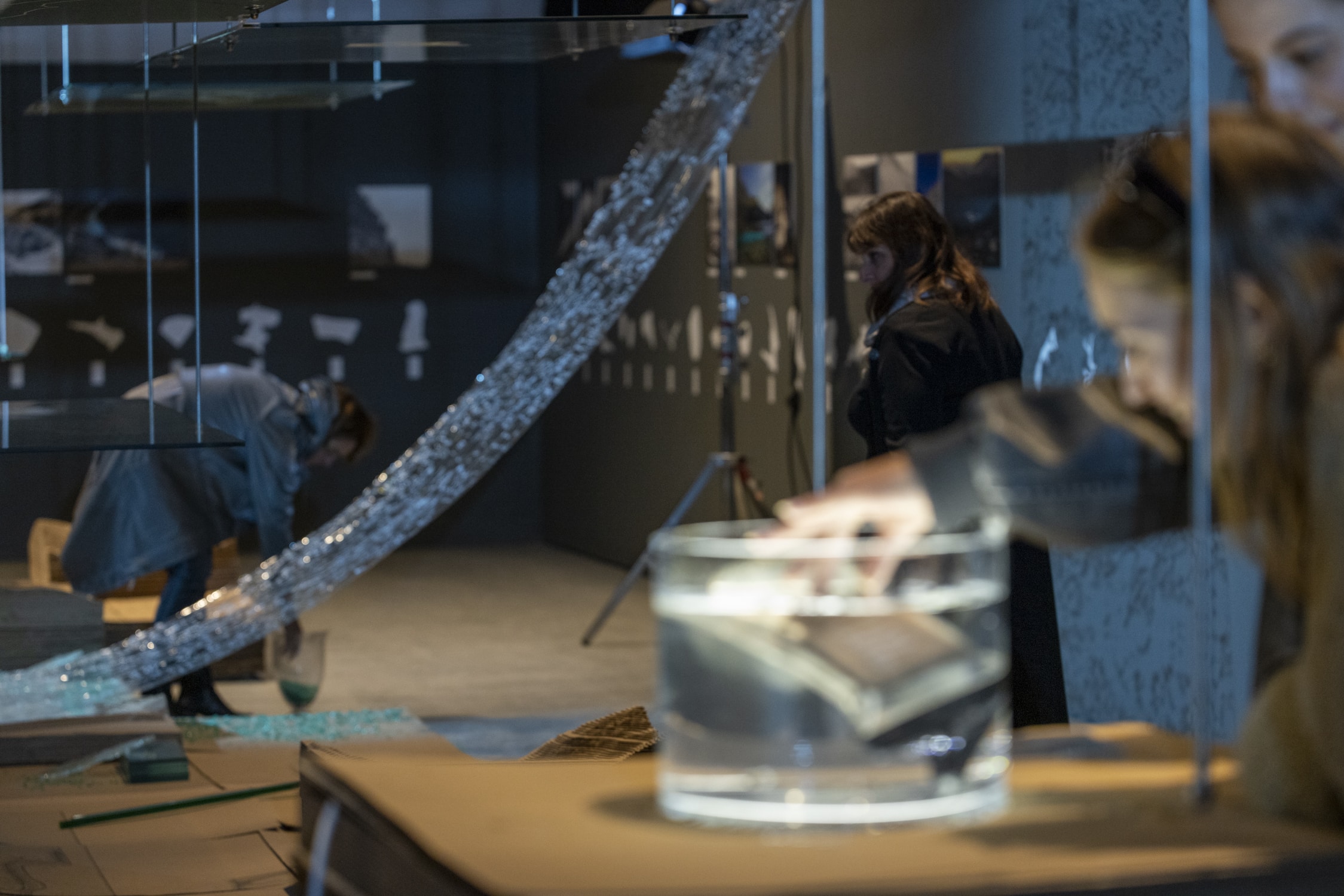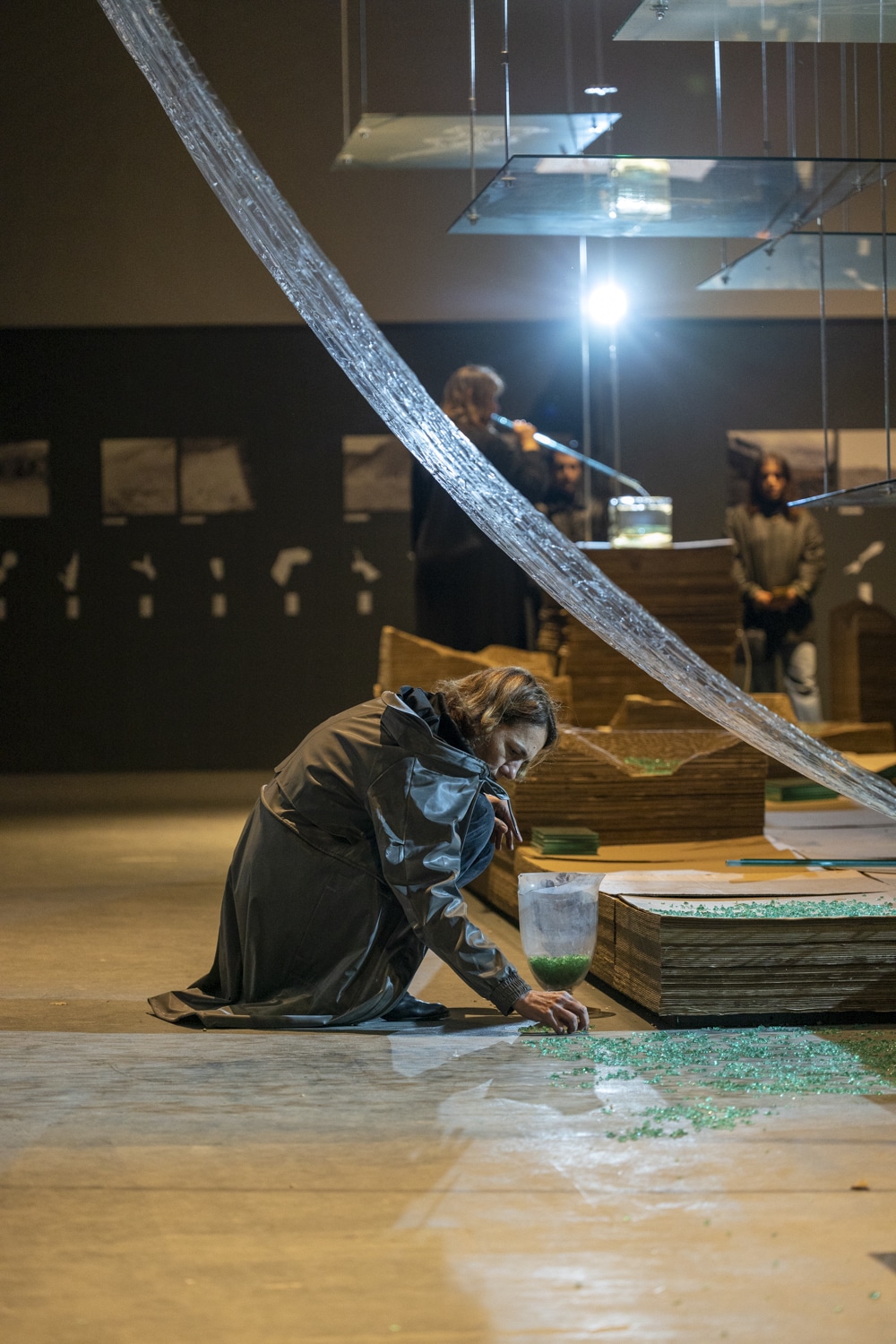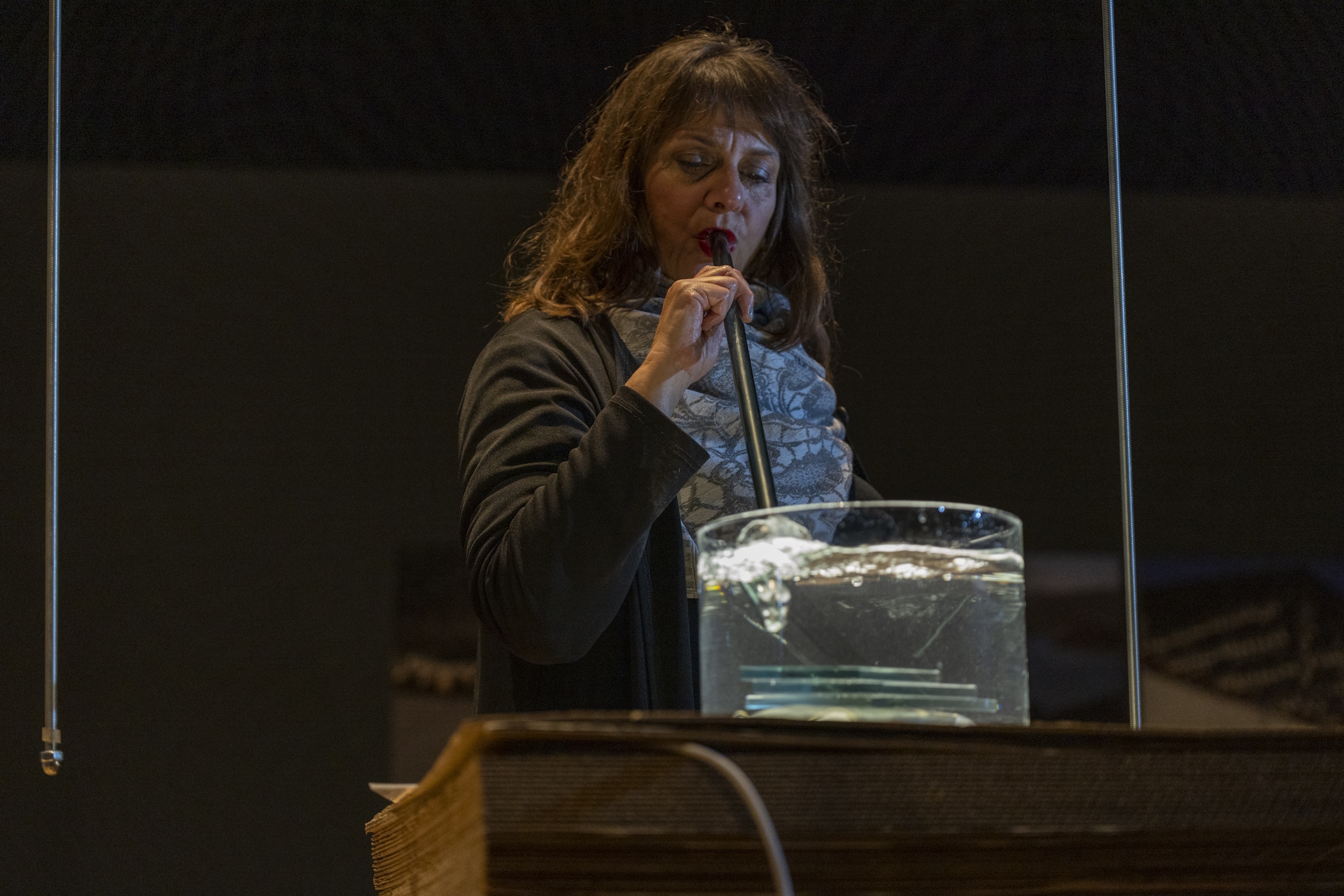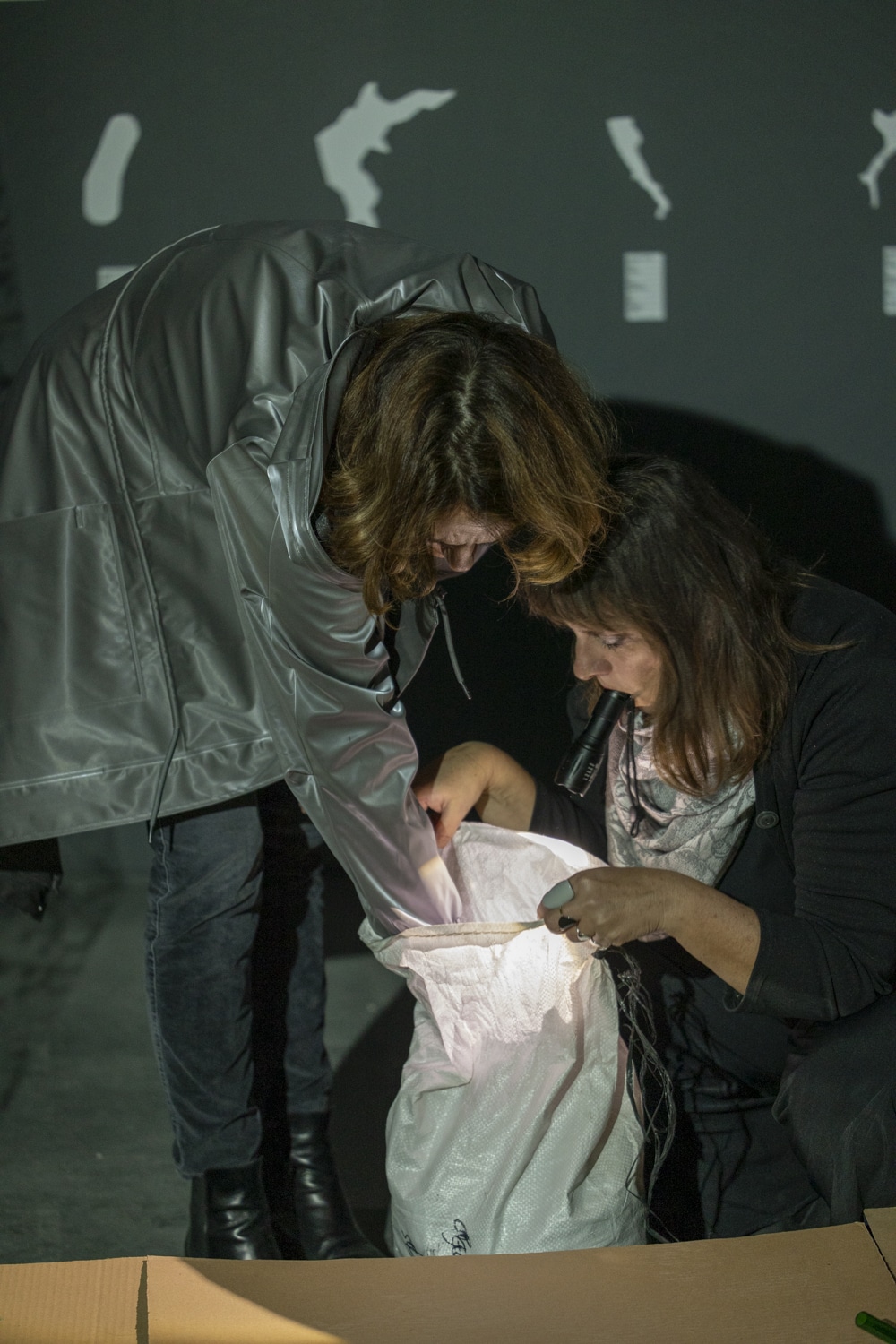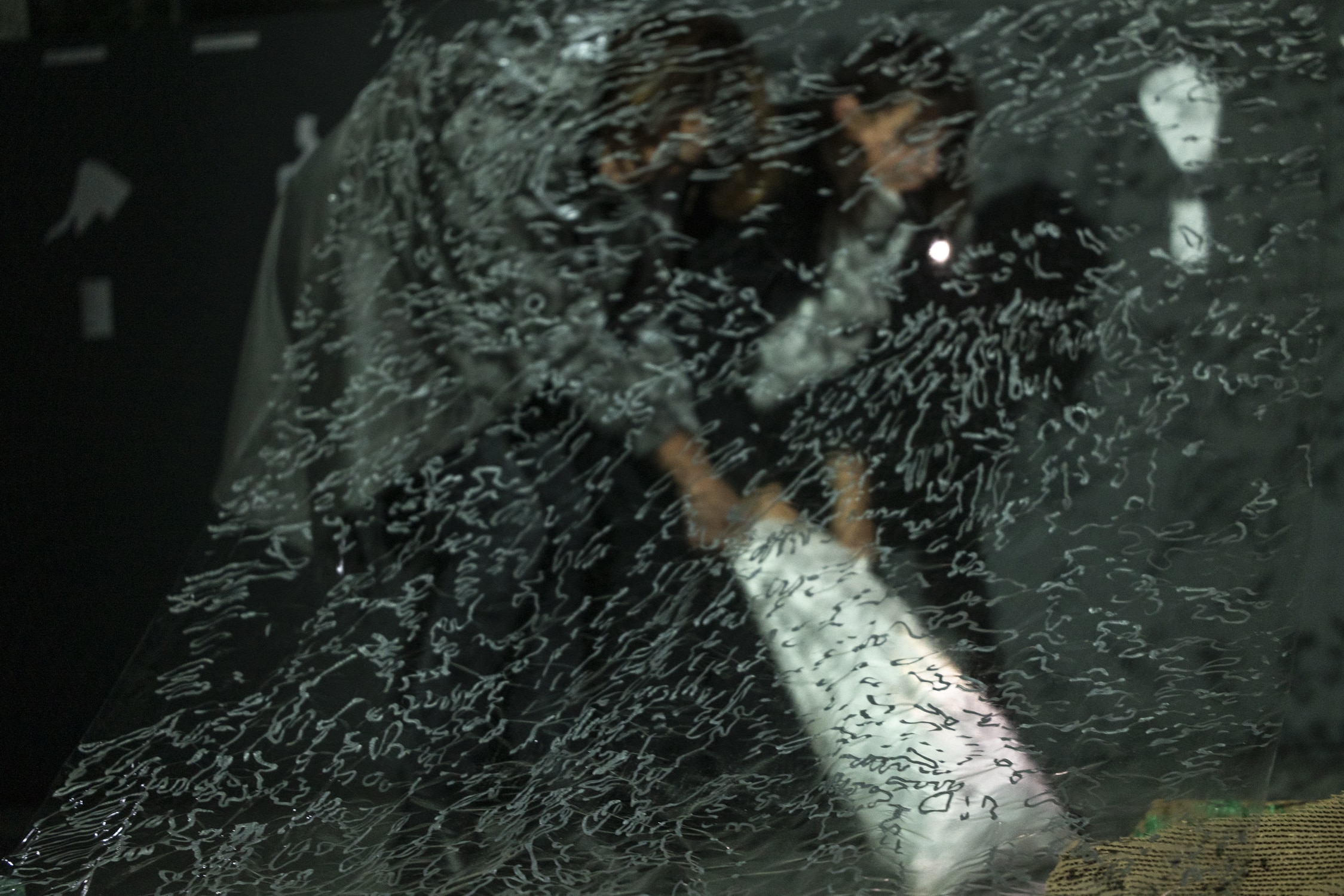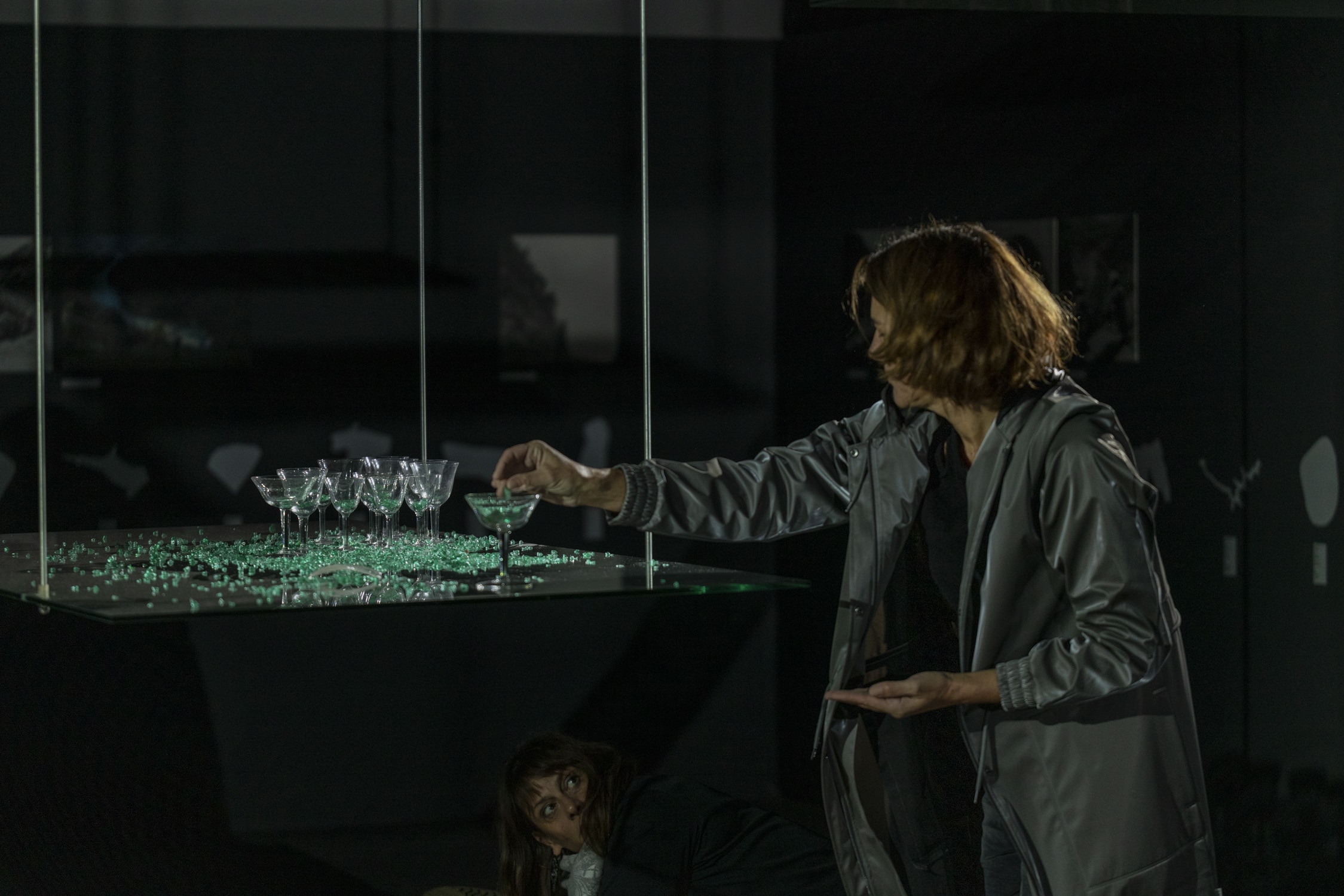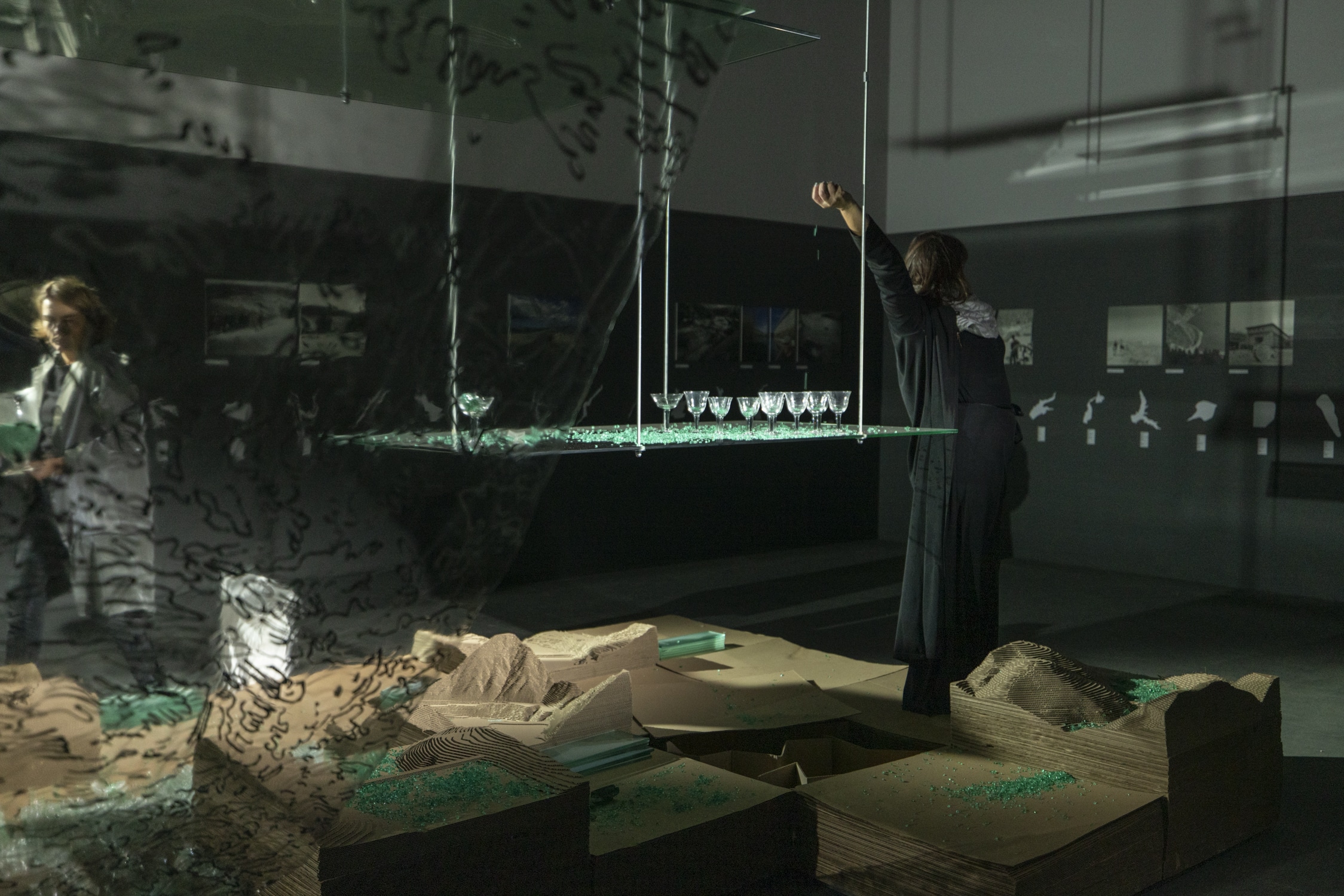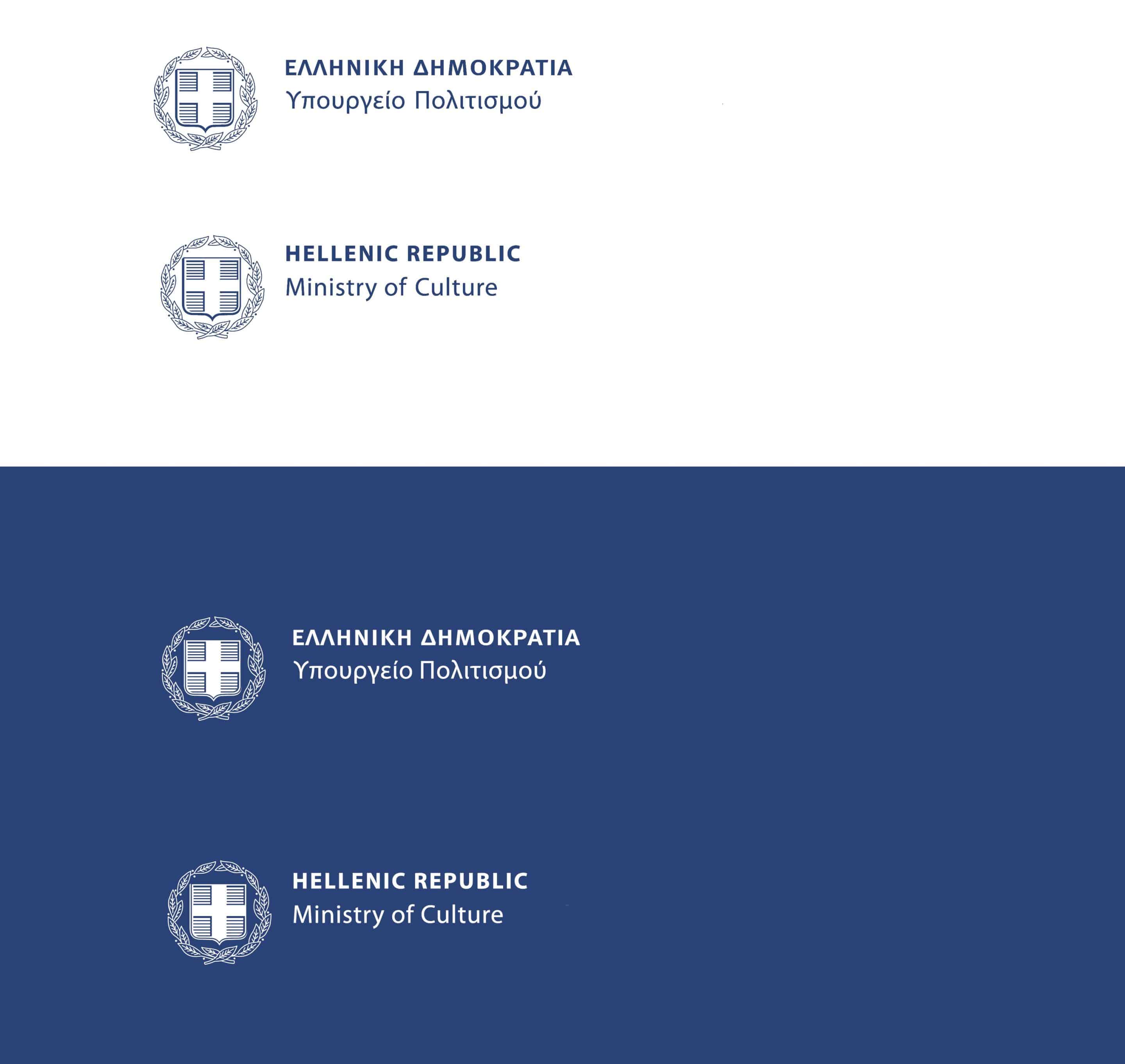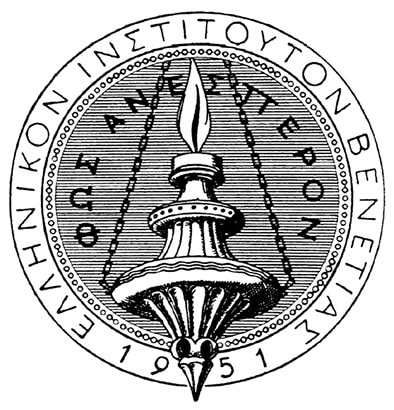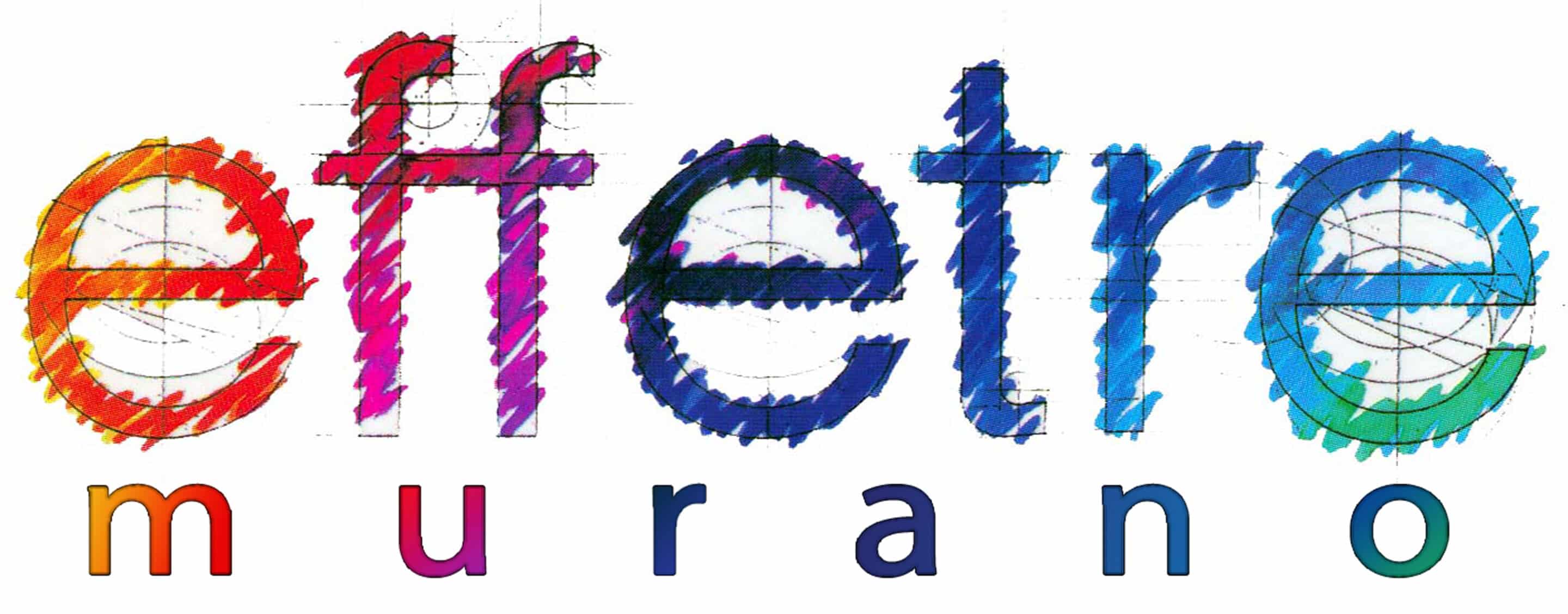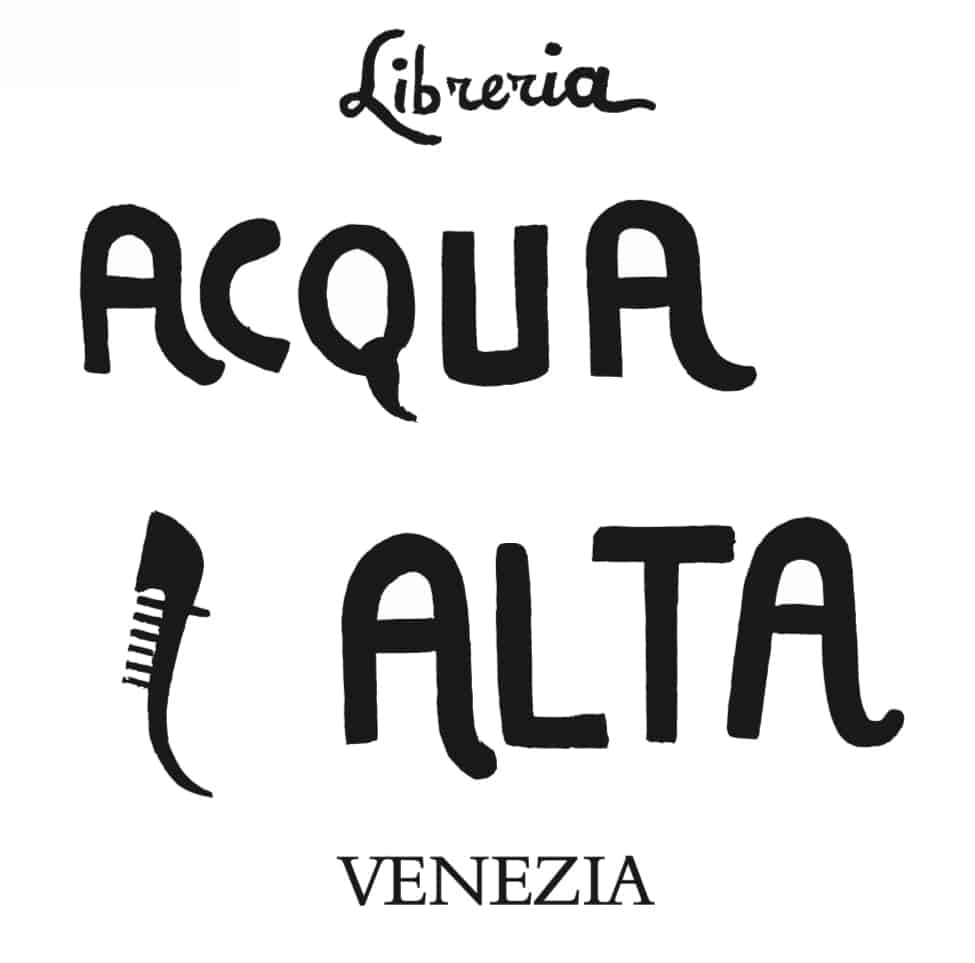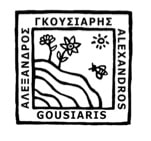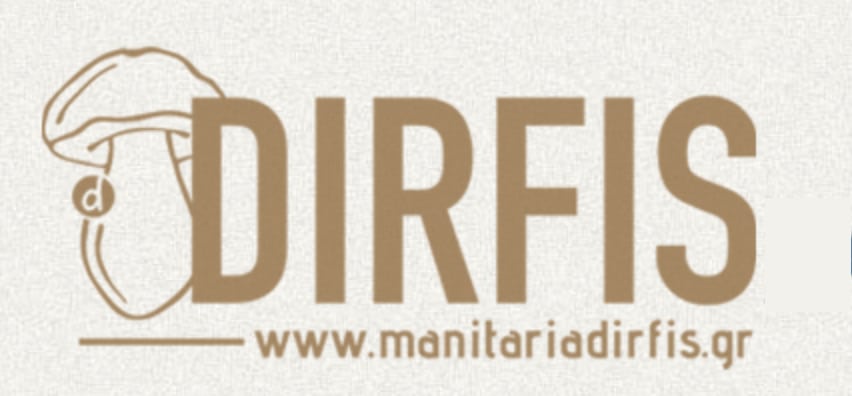Third Port – Venice
Venice Biennale - Greek Pavilion
The TRANSIENS NOSTRUM installation transpired as a performance during the last ten days of the Venice Architecture Biennale, from November 18 till November 26. Through this collaboration, the “Bodies of Water” exhibition, curated by Costis Paniyiris and Andreas Nikolovgenis, is deconstructed, and visitors may follow its gradual transformation into a new work, the third stop of the TRANSIENS NOSTRUM circumnavigation.
18/11/2023
26/11/2023
Italy
- Project Elements
- Implementation Details
- Art / Educational Program
- Location Description
- Map
- Special Thanks
In Venice, the two artists examined the element of verticality defined by the city’s submergence. They observe the cycles in which the sea corrodes human constructions and imposes itself upon the works of human beings. The rising and submerging water flows actively intervene in the city by reflecting light. The ebb and flow of the horizon reveal transcendental loci that allude to a palpable sense of exaltation as conveyed by Byzantine iconography and the undulations of Byzantine notation.
The work was presented at the premises of the Greek Pavilion at the Venice Architecture Biennale, in collaboration with architects Kostis Paniyiris and Andreas Nikolovgenis, curators of the “Bodies of Water” exhibition. The two curators approached the notion of water dams as an inverted archipelago. This idea inspired the two artists, who accordingly focused on the overflow of dams and the decompression of their water volumes. The recent floods in the Mediterranean basin, where water masses are altering the geography of vast areas and forcing their inhabitants to redefine their lives, have become the springboard for this synergy. Venice, a port where people remain in everyday dialogue with the transformative condition of water fluctuations, offered a platform for contemplating the mutual dependence between the works of human beings and the natural environment.
The TRANSIENS NOSTRUM installation transpired as a performance during the last ten days of the Venice Architecture Biennale, beginning on November 16 and culminating on November 26. Through this collaboration, the “Bodies of Water” exhibition was deconstructed, and visitors could follow its gradual transformation into a new work, the third stop of the TRANSIENS NOSTRUM circumnavigation.
THE INSTALLATION
On one side of the Greek Pavilion’s hall, the work “Wave” was hung. A large-scale work bearing a transparent surface coated with silver metallic paint, representing a cascade of water invading abruptly the space. Its light reflections referred to the glimpses of byzantine mosaics. One of the crystal surfaces with the bathymetric map of the BoW exhibition, was symbolically burst, as if water flooded the exhibition space. Crystal shards created from the shattering of the glass surface were gradually placed underneath the “Wave”, while Effetre Murano glass fragments formed a large-scale mosaic on the floor that reflected light. During the gradual deconstruction of the exhibition, speakers and wires were revealed. The sounds of shattering glass, old Murano crystal drinking glasses, sound of water collectively gathered, fragments of Murano glass falling on the different surfaces of the exhibition, muffled sounds of the excerpts of BoW soundscape by Dimitris Karageorgos submerged in the water, sounds of voice interacting with the sonic environment and the visitors, all merged together to form the soundscape of the Transiens Nostrum installation. The field recordings of the dams’ flora and fauna sounds were “drowned’’, while the performative duo weaved them into a daily, long-hour performance that transformed the exhibition space. The visitors were encouraged to participate as well.
The motor behind the synergy of the two teams was the timely observation of the sweeping force of nature and the creative capacities of people’s persistence, on a collective and individual level, to survive, accept loss, and dream of a sustainable and flourishing future.
The “Bodies of Water” exhibition at the Venice Architecture Biennale was organically fulfilled through its deconstruction and transformation into a novel dynamic condition where the flowing of water volumes dominates the scene. The collaboration between the two teams, materialized through the osmosis of their respective works, suggested a non-conventional reading of time through the prism of inversion.
Water as nature and water deposits as human constructions mirror each other and course in time through a dynamic and, at the same time, fragile relationship.
https://bodiesofwater.gr/
DEVELOPING SYNERGIES
In the third edition of TRANSIENS NOSTRUM, a collaboration network is organised with the Greek curatorial team of the 18th Vernice Architecture Biennale, Kostis Panigyris and Andreas Nikolovgenis. https://bodiesofwater.gr
On November 24th, a presentation of the collaboration in the form of a discussion between the artists and the curators took place at the Greek Pavilion. Among the guests joining the discussion were Vice-Rector of Ca’Foscari University Caterina Carpinato, professor of the Greek Language department and Carlo Santagiustina, Assistant Professor of Research Methods at the Venice School of Management for the Aqua Granda programme. Students of Trieste Architecture School visited the exhibition together with their professor Gianfranco Guaragna.
Creating synergies and collaborations is a fundamental axis of the Transiens Nostrum Project.
The ‘Transiens Nostrum’ performance in Venice was made possible thanks to the support of the Greek Ministry of Culture, Effetre Murano Glass and Hellenic Sea Salt. Betty’s Bread, Alexandros Gousiaris, Dirfis Mushrooms and Prekas Products supported the presentation event.
Stage lighting was designed by Stephanos Drousiotis. Panos Kostouros documented the performance through video and photographs. Istorima Archive was there to record oral stories about floods in Venice, in collaboration with students of the Ca’ Foscari University.
In progress
Venice Architecture Biennale – Greek Pavilion
Many thanks to
CATERINA BARBINI
CATERINA CARPINATO
EIRINI DIMITRIJEVITS
LINO FRIZZO
ALEXANDROS GOUSIARIS
ISIDOROS DOVRIDIS
MARIA KAKAGI
ELISSAVET KOULOURI
LEUTERIS LAHOUVARIS
KOSTAS PREKAS
LUCIANA RYDER
GIULIA SAYA
FANIS STOLTIDIS
LYDIA TRIFONA
ANASTASIOS TSETSOS
LEONILDE FRANCESCO TADDEI
ANASTASIA VOUTSARA
DIANA ZANDA
Videos
Transiens Nostrum Venice
Transiens Nostrum Venice - video by Jason Hanasik
Gallery
Credits
Christina Nakou
Artist
Anna Pangalou
Voice artist, Sound artist, Performer
Stefanos Drousiotis
Light Design
Panos Kostouros
Photographs, Video
Jason Hanasik
Video - Venice/Thessaly
Costis Paniyiris, Andreas Nikolovgenis
Curators of the Bodies of Water Exihbition


